2021 4th IEEE 5G Workshop on First Responder and Tactical Networks

Virtual || 14 December 2021
Click Here to Register to Access On-Demand: Free Registration
Click Here for Event Presentations
For questions, please contact Ashutosh Dutta at This email address is being protected from spambots. You need JavaScript enabled to view it.
All Events
2021 IEEE 5G Workshop on First Responder and Tactical Networks (WFRTN)
2020 IEEE 5G Workshop on First Responder and Tactical Networks (WFRTN)
2019 IEEE 5G Workshop on First Responder and Tactical Networks (WFRTN)
2018 IEEE 5G Workshop on First Responder and Tactical Networks (WFRTN)
| On this Page | Sponsors | |
|
Overview |
Gold |
Silver |
Bronze  |
Bronze  |
|
5G is not just the next evolution of 4G technology; it's a paradigm shift. It is expected to enable fundamentally new applications — with much more stringent requirements in latency and bandwidth — and provide resiliency and flexibility to the underlying network. Several standards organizations and forums, namely IEEE, the 3rd Generation Partnership Project, and the International Telecommunication Union, are working on defining the architecture and standardizing aspects of 5G technologies. However, few organizations are focusing on how such technologies can be useful to tactical and first responder networks.
IEEE is hosting the fourth workshop in this series on 14 December 2021. It is the result of partnership and collaboration with the Department of Homeland Security Science and Technology Directorate (DHS S&T, the Johns Hopkins University Applied Physics Lab (JHU/APL), and the Office of Under Secretary of Defense for research and Engineering (OUSD R&E) - 5G. This workshop will explore the applicability of 5G technologies for tactical and first responder networks, offer solutions, share use cases, and investigate research opportunities and challenges. The event will also provide an opportunity for 5G experts from industry and academia, as well as the standards, regulatory, homeland security, public safety and defense communities, to collaborate.
Download the full program-at-a-glance.
| Morning Plenary Session (Live) - Session Chair: Ashutosh Dutta | ||
| Time | Session Description | Speaker |
| 08:30-08:40 | Future Networks Intiative Introduction | Ashutosh Dutta (IEEE Future Networks Initiative Co-Chair) |
| 08:40-08:50 | Welcome Remarks | Raymond Yuan (JHU/APL) |
| 08:50-09:20 | Keynote: Exploring 5G Use Cases in DHS Operational Environments | Russell Becker (DHS S&T) |
| 09:20-09:40 | PAWR Platforms: National Assets for Advanced Network Research | Mari Silbey (US IGNITE/NSF) |
| 09:40-10:00 | Spectrum for 5G | Nicholas Oros (FCC) |
| 10:00-10:20 | 6G Flagship research – Use case public safety | Ari Pouttu (6G Flagship/University of Oulu) |
| 10:20-10:40 | 5G/6G Building Blocks for Public Safety Communications | Charles Clancy (MITRE) |
| 10:40-10:50 | Program Overview | Brad Kloza (IEEE) |
| 10:50-11:00 | Break | |
| Track 1: First Responder 1 (Simu-Live) - Session Chair: Ryan Pepito | ||
| Time | Session Description | Speaker |
| 11:00-11:20 | 5G Information Overload and the Information Sharing Framework | Ruth Vogel, John Contestabile, Rob Dew, Jay Chang (JHU/APL) |
| 11:20-11:40 | Addressing IoT Device Security Concerns in Connected World: Evolutions of Standards, Certifications, Regulations |
Anahit Tarkhanyan (Intel) |
| 11:40-12:00 | Communication Technologies to Fight Forest Fires | Periklis Chatzimisios, Christos Iliopoulos |
| 12:00-12:30 | Break | |
| 12:30-12:50 | Adaptable Communication System to the emergency scenario: challenges and opportunities for first responders |
Alessandro Vizzarri; Romeo Giuliano; Franco Mazzenga; Francesco Vatalaro; Anna Maria Vegni |
| 12:50-13:10 | HELPS for Emergency Location Service | Hichan Moon (Samsung Electronics) |
| 13:10-13:30 | 5G Capabilities for First Responders | Brian Daly (AT&T) |
| 13:30-13:50 | IEEE MOVE supporting power and communications at disasters | Grayson Randall |
| 13:50-14:10 | A brief history and future of police radio communications in Hong Kong | Jolly C Wong (Shanghai University) |
| 14:10-14:30 | Using PAWR platforms to explore AI-enabled O-RAN/ONAP-based disaster management in 5G multi-operator/multi-vendor environments |
David Allabaugh (Fujitsu), Martin Skorupski, Alexandru Stancu (Highstreet Technologies), Ivan Seskar (Rutgers University/WINLAB), David Johnson, Jacobus Van der Merwe (University of Utah), Tracy Van Brakle, Giovanni Vannucci (AT&T) |
| Track 2: First Responder 2 (Simu-Live) - Session Chair: Narendra Mangra | ||
| Time | Session Description | Speaker |
| 11:00-11:20 | IEEE Public Safety Technology Initiative: Emerging Public Safety Technologies and Beyond! | Mehmet Ulema; Doug Zuckerman |
| 11:20-11:40 | National Security and Emergency Preparedness (NS/EP) Communications – Current and Future Initiatives | Subir Das (Peraton Labs), Frank Suraci (CISA) |
| 11:40-12:00 | Non-RT RIC use case service assurance for first responder community | Eugene Gomes and Deepak Kataria (Ericsson) |
| 12:00-12:30 | Break | |
| 12:30-12:50 | Network Slicing and Traffic Prioritization for First Responder Emergency Services | Eapen Kuruvilla; Denise M.B. Masi; Steven Gordon; Muhammad Hussain; David Garbin |
| 12:50-13:10 | Overview of Non Terrestrial Networks | Amitabha Ghosh (Nokia Labs) |
| 13:10-13:30 | POWDER platform: Building blocks of a living lab enabling your research | Kobus Van Der Merwe (University of Utah) |
| 13:30-13:50 | Innovating in the Critical Communications Space | John Macias (Verizon) |
| 13:50-14:10 | Enabling Data sharing to maximize first-responder readiness: The IUDX case study | Inder Gopal (IUDX) |
| 14:10-14:30 | Transforming First Responder Networks to 5G | Kelly Krick (Ericsson) |
| Track 3:Tactical Networks 1 (Simu-Live) - Session Chair: Cherita Corbett | ||
| Time | Session Description | Speaker |
| 11:00-11:20 | Enabling 5G expansion into rural areas: The case study of LibreRouter | Sarbani Banerjee Belur; Dipen Parmar; Tejas Vaghela; Rajesh Kushalkar; Michael Jensen |
| 11:20-11:40 | Systems and networks for supporting land SAR actions in Poland. Perspective of introducing testbed for MANET/4G/5G net to First Responder duties |
Maciej Gucma; Remigiusz Lysik; Miroslaw Radwan |
| 11:40-12:00 | Foundational Capabilities for Tactical 5G and Beyond | George F Elmasry; Paul Corwin; Rockwell Collins |
| 12:00-12:30 | Break | |
| 12:30-12:50 | Performance evaluation of Quality of Service in 5th Generation mobile Network | Huiam Eldai; Ibrahim Kh Eltahir |
| 12:50-13:10 | Mobile Networks for PPDR/Tactical Use at Work: the Athonet PriMo Solutions | Massimiliano Gianesin; Marco Centenaro; Nicola di Pietro; Daniele Munaretto; Simon O'Donnell |
| 13:10-13:30 | Colosseum: How can the World's Largest Network Emulator Accelerate Tactical Network Experimentation? |
Abhimanyu Gosain (North Eastern University) |
| 13:30-13:50 | Dependable 5G Networks for Emergency Applications | Eman Hammad (Texas A&M University System - RELLIS) |
| 13:50-14:10 | Enabling Advanced Capabilities via Tactical 4G/5G Cellular Networks | Steve Vogelsang (Nokia) |
| 14:10-14:30 | 5G & Beyond Security for Mission Critical Communications | Arupjyoti Bhuyan (Idaho National Lab) |
| Track 4: Tactical Networks 2 (Simu-Live) - Session Chair: Julia Andrusenko | ||
| Time | Session Description | Speaker |
| 11:00-11:20 | Future Tactical First Responder Networks: From Spectrum Agility to Network Agility | Apurva Mody (Airnaculus) |
| 11:20-11:40 | COSMOS: An Open, Programmable, City-Scale Wireless and Optical Testbed | Ivan Seskar (Rutgers University/WINLAB) |
| 11:40-12:00 | Non Terrestrial Networks – Introduction, Applications, and Technology Challenges | Adnan Khan (Anritsu) |
| 12:00-12:30 | Break | |
| 12:30-12:50 | AERPAW: Aerial Experimentation and Research Platform for Advanced Wireless | Ismail Guvenc (North Carolina State University) |
| 12:50-13:10 | Open Source 5G Security Testbed for Edge Computing | |
| 13:10-13:30 | Testing and Analyzing 5G Networks | Samir Chatterjee (Rebaca) |
| 13:30-13:50 | Edge Services, IAB, and ORAN for the Tactical 5G Networks | Richard Russell (Radisys) |
| 13:50-14:10 | Leveraging physical layer security in first responder and tactical networks | Arsenia Chorti (ENSEA) |
| 14:10-14:30 | An Open Source 5G-Enabled Edge Cloud | Larry Peterson (ONF) |
| Track 5: Research (Simu-Live) - Session Chair: Jared Everett | ||
| Time | Session Description | Speaker |
| 11:00-11:20 | A Comprehensive Evaluation on Multicast and Unicast in Public Safety Communications | Chunmei Liu |
| 11:20-11:40 | 5G and Beyond Communications Security with Adversarial Machine Learning | Yalin E Sagduyu; Tugba Erpek |
| 11:40-12:00 | 5G NR and LTE Coexistence in Public Safety Communications | Sneihil Gopal; David Griffith |
| 12:00-12:30 | Break | |
| 12:30-12:50 | Distributed Beamforming with Autonomous UGVs | Brian M Sadler |
| 12:50-13:10 | Security Analysis of 5G First Responder Networks | Steven Yuen |
| 3:10-13:30 | Network Simulator for Public Safety Communications | Richard Rouil |
| 13:30-13:50 | A Study on Using 5GC User Plane Function for Detecting and Monitoring Arrhythmia Symptoms with Portable Single-Lead ECG Devices in Emergency Medical Services |
Bhuvaneswari Arunachalan |
| 13:50-14:10 | Design and Development of Compact Microstrip Patch Antennas Using Ceramic Substrates | S. Kannadhasan |
| 14:10-14:30 | 5G, an Innovative Network for Ghana and Other Parts of Africa | Timothy Kwadwo Asiedu |
| Track 6: Technology (Simu-Live) - Session Chair: Oscar Somelock | ||
| Time | Session Description | Speaker |
| 11:00-11:20 | Security Risk Analysis of IoT and Edge Networks | Ashish Kundu (Cisco) |
| 11:20-11:40 | Ubiquitous coverage of 5G through Non-Terrestrial Networks: What is it and How to Prototype it | Raymond Shen (Keysight) |
| 11:40-12:00 | Testing and Performance of free5GC | Jyh-Cheng Chen (National Yang Ming Chiao Tung University) |
| 12:00-12:30 | Break | |
| 12:30-12:50 | Leverage and enhance 5G/NextG for tactical use through collaboration | Lizy Paul (National Spectrum Consortium/Lockheed Martin) |
| 12:50-13:10 | Deployable Technology Expectations and Realities for the First Responder | Gordon Beattie Jr. (Viavi Solutions) |
| 13:10-13:40 | RAN disaggregation for a flexible and reliable network | Rajat Prakash (Qulacomm) |
| 13:40-14:00 | Rescue Services and the Multi-Cloud Service Grid | Sven van der Meer (VMWare) |
| 14:00-14:20 | 5G Digital Twin and Network Transformation | Glenn Stern (Spirent) |
| 14:20-14:40 | A Wide-Band DPA(Doherty Power Amplifier) for 5G Communications | Ki-Jin Kim (Korea Electronics Technology Institute) |
| Closing Plenary Session (Live) - Session Chair: Pamela Patton | ||
| Time | Session Description | Speaker |
| 14:30-14:45 | Break | |
| 14:45-15:15 | Keynote: OUSD R&E: NextG Tactical Networks | Sumit Roy (OUSD R&E) |
| 15:15-15:35 | Evolving FirstNet for the Future | Jeff Bratcher (FirstNet) |
| 15:35-15:55 | 5G & AI for Public Safety Communications | Nada Golmie (NIST) |
| 15:55-16:55 | Panel: 5G Technologies - Opportunities and Challenges for First Responder and Tactical Networks |
Sean Brassard (JHU/APL), Navin Jaffer (ECD), Scott Fox (DOD), Clarence Huff (DOD), Jorge Pereira (European Commission) |
| 16:55-17:00 | Closing Presentation | Rob Bartholet (JHU/APL) |
Track Descriptions
Technology
Covering 5G and beyond technologies currently available to solve challenges associated with first responder and tactical networks. The technologies could cover a wide variety, but are not limited to 5G hardware, millimeter wave (mmW) communication, 5G network security, massive multiple input multiple output (MIMO) antenna technology, non-terrestrial architectures and supporting hardware/software, optics, new radio (NR), edge cloud computing, core network architecture and management, network slicing, and 5G applications and services.
First Responder Networks
Covering use cases and solutions applicable to First Responder community, including case studies that illustrate the gaps in current technologies and how 5G can augment operational capabilities. Solutions could also include various integrated systems, platforms, frameworks, and testbeds that can provide the desired features, functionalities, and service level agreements (SLAs) to meet the needs of the first responders including fire rescue services, law enforcement, emergency management, emergency medical service and other public safety entities.
Tactical Networks
Covering use cases and solutions applicable to Tactical Networks, including case studies of real life scenarios that illustrate the gaps in current technologies and how 5G can augment the capabilities. Solutions could include various integrated systems, platforms, frameworks, and testbeds that can provide the desired features, functionalities, and service level agreements (SLAs) to meet the needs of the tactical
networks such as Army, Air Force or Navy type networks. Proposals could also include results from initial deployments and trials.
Research
Covering new development in technologies, novel solutions, ongoing research, and prototypes that look well beyond three-, five- and 10-year horizons. Talks could cover fundamental research on technologies beyond 5G, results from initial experimentation, proof-of-concept, field tests, and systems optimization.
Click Here to Register to Access On-Demand: Free Registration
For questions, please contact Ashutosh Dutta at This email address is being protected from spambots. You need JavaScript enabled to view it.
Sponsorship and Exhibit Opportunities
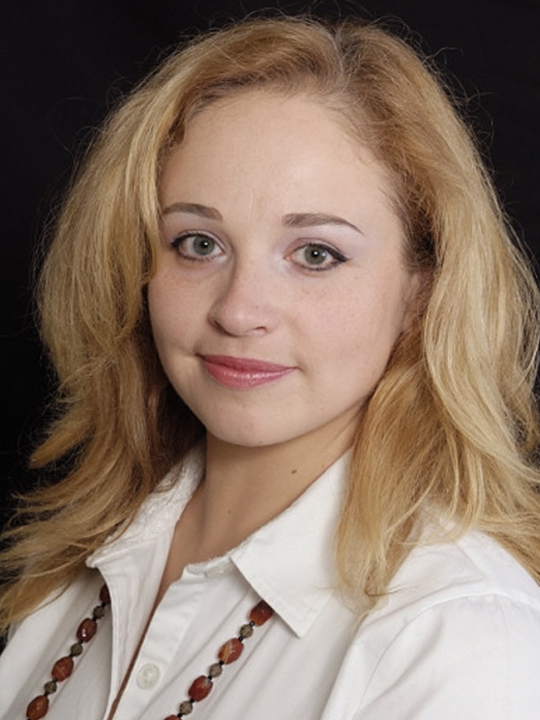 Ms. Julia Andrusenko received her bachelor's and master's degrees in electrical engineering in 2002 from Drexel University, Philadelphia, PA. She is a senior communications engineer at APL and is the Chief Engineer of the Tactical Wireless Systems group of APL. Ms. Andrusenko has an extensive background in communications theory, wireless networking, satellite communications, Radio Frequency (RF) propagation prediction, communications systems vulnerability, computer simulation of communications systems, evolutionary computation, genetic algorithms/programming, MIMO, and millimeter wave technologies. She also has a substantial experience developing electronic warfare methodologies for various advanced commercial communications systems and military data links. Ms. Andrusenko is a published author of many technical papers and has recently co-authored a book titled “Wireless Internetworking: Understanding Internetworking Challenges” through Wiley/IEEE Press. Ms. Andrusenko is a member of the IEEE Communications Society.
Ms. Julia Andrusenko received her bachelor's and master's degrees in electrical engineering in 2002 from Drexel University, Philadelphia, PA. She is a senior communications engineer at APL and is the Chief Engineer of the Tactical Wireless Systems group of APL. Ms. Andrusenko has an extensive background in communications theory, wireless networking, satellite communications, Radio Frequency (RF) propagation prediction, communications systems vulnerability, computer simulation of communications systems, evolutionary computation, genetic algorithms/programming, MIMO, and millimeter wave technologies. She also has a substantial experience developing electronic warfare methodologies for various advanced commercial communications systems and military data links. Ms. Andrusenko is a published author of many technical papers and has recently co-authored a book titled “Wireless Internetworking: Understanding Internetworking Challenges” through Wiley/IEEE Press. Ms. Andrusenko is a member of the IEEE Communications Society.
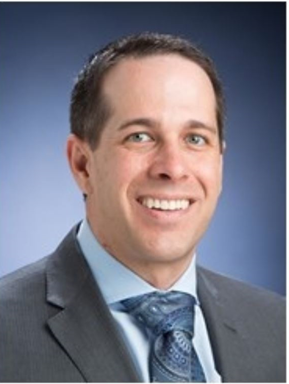 Sean Brassard is the Program Manager for the Special Operations Resilient Communications program at Johns Hopkins University Applied Physics Lab where he serves as a lead for various 5G and Cognitive Radio projects for the DoD. He has over 20 years of experience working in telecom and DoD tactical radio industries with a focus on systems engineering, software defined radios, anti-jam/signal cancellation techniques, and geo-location systems. He holds a B.E. in Electrical Engineering from Vanderbilt University and a M.S. in Electrical Engineering from Johns Hopkins University.
Sean Brassard is the Program Manager for the Special Operations Resilient Communications program at Johns Hopkins University Applied Physics Lab where he serves as a lead for various 5G and Cognitive Radio projects for the DoD. He has over 20 years of experience working in telecom and DoD tactical radio industries with a focus on systems engineering, software defined radios, anti-jam/signal cancellation techniques, and geo-location systems. He holds a B.E. in Electrical Engineering from Vanderbilt University and a M.S. in Electrical Engineering from Johns Hopkins University.
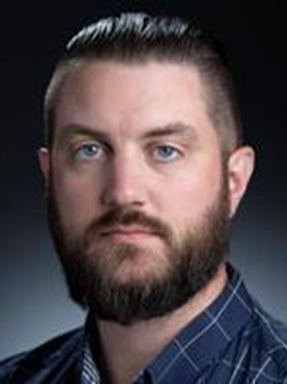 David M. Coleman is the chief scientist for the Communications Branch in APL’s Asymmetric Operations Sector and also serves as the lead for the Spectrum Operations research portfolio in the Cyber Operations Mission Area. He earned a BS in computer engineering from Elizabethtown College, an MS in computer engineering from the University of Arkansas, and a PhD in electrical engineering from University of Maryland, College Park. Dr. Coleman has presented at many conferences for tactical networks and has been published in journals and proceedings.
David M. Coleman is the chief scientist for the Communications Branch in APL’s Asymmetric Operations Sector and also serves as the lead for the Spectrum Operations research portfolio in the Cyber Operations Mission Area. He earned a BS in computer engineering from Elizabethtown College, an MS in computer engineering from the University of Arkansas, and a PhD in electrical engineering from University of Maryland, College Park. Dr. Coleman has presented at many conferences for tactical networks and has been published in journals and proceedings.

Dr. Cherita Corbett is the Chief Scientist for the Communication and Networking Systems Group at Johns Hopkins University Applied Physics Laboratory. She guides research and development strategy and activities focused on resilient communications for military operations and critical infrastructure. Her current research interests include: secure mobile technologies, secure tactical communication systems, and insider threat protection. Prior to joining APL, Dr. Corbett was a Senior Computer Scientist at SRI International where she performed research on self-healing cellular networks, vehicular security, and IoT security. She also provided programmatic support to the Cyber Security Division of DHS S&T in the area of mobile technology. She has published over 30 technical manuscripts and holds a U.S. patent in cyber security. She holds a Ph.D. in Electrical & Computer Engineering from Georgia Institute of Technology.
 Dr. Ashutosh Dutta is currently senior scientist and 5G Chief Strategist at the Johns Hopkins University Applied Physics Laboratory (JHU/APL). He is also a JHU/APL Sabbatical Fellow and adjunct faculty at The Johns Hopkins University. Ashutosh also serves as the chair for Electrical and Computer Engineering Department of Engineering for Professional Program at Johns Hopkins University. His career, spanning more than 30 years, includes Director of Technology Security and Lead Member of Technical Staff at AT&T, CTO of Wireless for NIKSUN, Inc., Senior Scientist and Project Manager in Telcordia Research, Director of the Central Research Facility at Columbia University, adjunct faculty at NJIT, and Computer Engineer with TATA Motors. He has more than 100 conference, journal publications, and standards specifications, three book chapters, and 31 issued patents. Ashutosh is co-author of the book, titled, “Mobility Protocols and Handover Optimization: Design,Evaluation and Application,” published by IEEE and John & Wiley that has recently been translated into Chinese Language. Ashutosh is the founding co-chair for IEEE Future Networks initiative and serves as IEEE Communications Society’s Distinguished Lecturer for 2017-2018 and Distinguised Speaker for ACM from 2020-2022. He was recipient of the prestigious 2009 IEEE MGA Leadership award and 2010 IEEE-USA professional leadership award. Ashutosh obtained his BS in Electrical Engineering from NIT Rourkela, India, MS in Computer Science from NJIT, and Ph.D. in Electrical Engineering from Columbia University under the supervision of Prof. Henning Schulzrinne. Ashutosh is a Fellow of IEEE and senior member of ACM.
Dr. Ashutosh Dutta is currently senior scientist and 5G Chief Strategist at the Johns Hopkins University Applied Physics Laboratory (JHU/APL). He is also a JHU/APL Sabbatical Fellow and adjunct faculty at The Johns Hopkins University. Ashutosh also serves as the chair for Electrical and Computer Engineering Department of Engineering for Professional Program at Johns Hopkins University. His career, spanning more than 30 years, includes Director of Technology Security and Lead Member of Technical Staff at AT&T, CTO of Wireless for NIKSUN, Inc., Senior Scientist and Project Manager in Telcordia Research, Director of the Central Research Facility at Columbia University, adjunct faculty at NJIT, and Computer Engineer with TATA Motors. He has more than 100 conference, journal publications, and standards specifications, three book chapters, and 31 issued patents. Ashutosh is co-author of the book, titled, “Mobility Protocols and Handover Optimization: Design,Evaluation and Application,” published by IEEE and John & Wiley that has recently been translated into Chinese Language. Ashutosh is the founding co-chair for IEEE Future Networks initiative and serves as IEEE Communications Society’s Distinguished Lecturer for 2017-2018 and Distinguised Speaker for ACM from 2020-2022. He was recipient of the prestigious 2009 IEEE MGA Leadership award and 2010 IEEE-USA professional leadership award. Ashutosh obtained his BS in Electrical Engineering from NIT Rourkela, India, MS in Computer Science from NJIT, and Ph.D. in Electrical Engineering from Columbia University under the supervision of Prof. Henning Schulzrinne. Ashutosh is a Fellow of IEEE and senior member of ACM.
 Mr. Jared Everett is a senior wireless communications research engineer in the Wireless Cyber Capabilities group at the Johns Hopkins University Applied Physics Laboratory (Johns Hopkins APL). Since joining APL in 2009, his research has focused broadly on the use of cellular technologies for defense and national security applications. He has a deep knowledge of LTE and emerging 5G standards, specializing in cellular air interfaces and end-to-end systems. He is a co-author of the book, “Wireless Networking: Understanding Internetworking Challenges,” published by Wiley/IEEE Press. His current research interests include innovative approaches to spectrum sharing in 5G networks. Jared holds M.S. and B.S. degrees in electrical engineering from North Carolina State University. He also holds a B.A. degree in music.
Mr. Jared Everett is a senior wireless communications research engineer in the Wireless Cyber Capabilities group at the Johns Hopkins University Applied Physics Laboratory (Johns Hopkins APL). Since joining APL in 2009, his research has focused broadly on the use of cellular technologies for defense and national security applications. He has a deep knowledge of LTE and emerging 5G standards, specializing in cellular air interfaces and end-to-end systems. He is a co-author of the book, “Wireless Networking: Understanding Internetworking Challenges,” published by Wiley/IEEE Press. His current research interests include innovative approaches to spectrum sharing in 5G networks. Jared holds M.S. and B.S. degrees in electrical engineering from North Carolina State University. He also holds a B.A. degree in music.
 Mr. Douglas Holly, Principle, Eagle Management Group
Mr. Douglas Holly, Principle, Eagle Management Group
Doug brings a broad range of telecommunications, business leadership and management skills with a particular focus on project management, operational improvement and M&A. He currently heads up Eagle Management Group a consulting firm that provides general management, project management and strategic planning to improve operational performance. EMG also provides M&A selection, diligence support and integration services to businesses. He is a director of the Washington Section and chair its chapter of the Communications Society and also chair of the joint Washington/Northern Virginia chapter of the TEMS. He was finance chair for the IEEE GLOBECOM 2007 and 2016. Doug holds a bachelor's and master's dress in electrical engineering from Rensselaer Polytechnic Institute.
 Amy Howard is the Branch Office Administrator for the Communications Systems Branch in the Asymmetric Operations Sector at Johns Hopkins University Applied Physics Lab (APL). Amy joined APL in May, 2015 and is in her 2nd year as co-chair for the 5G Workshop. She has over 25 years of professional office and event coordination experience.
Amy Howard is the Branch Office Administrator for the Communications Systems Branch in the Asymmetric Operations Sector at Johns Hopkins University Applied Physics Lab (APL). Amy joined APL in May, 2015 and is in her 2nd year as co-chair for the 5G Workshop. She has over 25 years of professional office and event coordination experience.
 Carolyn Stallings-Little is the Group Office Administrator for the Communication and Networking Systems Group at Johns Hopkins University’s Applied Physics Laboratory (APL). She joined APL in March, 2017. She has over 25 years of professional administrative experience.
Carolyn Stallings-Little is the Group Office Administrator for the Communication and Networking Systems Group at Johns Hopkins University’s Applied Physics Laboratory (APL). She joined APL in March, 2017. She has over 25 years of professional administrative experience.
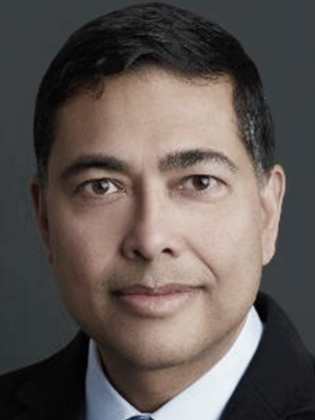
Mr. Narendra Mangra is a wireless mobility advisor at GlobeNet. His diverse experience extends across the wireless mobility ecosystem and mobile network deployment lifecycle within academia, government and industry. He is an Adjunct Professor at the Volgeneau School of Engineering at the George Mason University. Narendra is also the Applications and Services Co-Chair and Summer School Chair for IEEE Networks. He leads the Smart Cities roadmap development initiative and recurring industry focused educational sessions for Young Professionals.
Narendra has extensive consulting experience in the mobile satellite and cellular communications, public safety communications, information technology, higher education, and federal & local government sectors. He holds an MSEE and BSEE from Polytechnic University, MBA from the Robert H. Smith School of Business at the University of Maryland, and a Project Management Professional (PMP) Certificate. His current interests include the 5G ecosystem, Smart Cities and interconnected ecosystems.
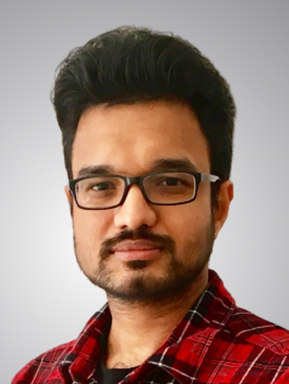 Dr. Mithun Mukherjee received the Ph.D. degree in electrical engineering from the Indian Institute of Technology Patna, Patna, India, in 2015. He is currently a Professor with the School of Artificial Intelligence, Nanjing University of Information Science and Technology, Nanjing, China. He has (co)authored more than 100 publications in peer-reviewed journals and conferences. Dr. Mukherjee was a recipient of the 2018 IEEE International Conference on Advanced Networks and Telecommunications Systems (ANTS) Best Paper Award. He also served/will serve as the Publicity Co-Chair of IEEE 5G World 2018, 2019, and 2020. His current research interests center around fog computing and edge intelligence.
Dr. Mithun Mukherjee received the Ph.D. degree in electrical engineering from the Indian Institute of Technology Patna, Patna, India, in 2015. He is currently a Professor with the School of Artificial Intelligence, Nanjing University of Information Science and Technology, Nanjing, China. He has (co)authored more than 100 publications in peer-reviewed journals and conferences. Dr. Mukherjee was a recipient of the 2018 IEEE International Conference on Advanced Networks and Telecommunications Systems (ANTS) Best Paper Award. He also served/will serve as the Publicity Co-Chair of IEEE 5G World 2018, 2019, and 2020. His current research interests center around fog computing and edge intelligence.
 Francis X. O’Connell P.E. is an electrical engineer in New Jersey. He works for Skylink Technology in Hamilton, NJ to design, build and integrate spacecraft test systems. Fran is a former Lockheed Martin employee from East Windsor, NJ. At Lockheed-Martin, his team designed and developed the avionics for weather satellites including TIROS and DMSP for NOAA and the Air Force respectively as well as science satellites such as GGS for NASA Goddard and the Mars Global Surveyor spacecraft for JPL. Through his own company, FXO Inc, since 1999 Fran has worked on-site at spacecraft manufacturers to develop test plans, solve difficult test anomalies, and perform reliability analyses.
Francis X. O’Connell P.E. is an electrical engineer in New Jersey. He works for Skylink Technology in Hamilton, NJ to design, build and integrate spacecraft test systems. Fran is a former Lockheed Martin employee from East Windsor, NJ. At Lockheed-Martin, his team designed and developed the avionics for weather satellites including TIROS and DMSP for NOAA and the Air Force respectively as well as science satellites such as GGS for NASA Goddard and the Mars Global Surveyor spacecraft for JPL. Through his own company, FXO Inc, since 1999 Fran has worked on-site at spacecraft manufacturers to develop test plans, solve difficult test anomalies, and perform reliability analyses.
Fran is a Senior Member in the IEEE. He is a Past Chair of the Princeton / Central Jersey Section and its webmaster. Fran is a member of the Aerospace and Electronic Systems Society and the vice-chair of the PCJS Solid State Circuits Society. Fran has volunteered as treasurer for many recent IEEE Communications Society Conferences and Workshops.
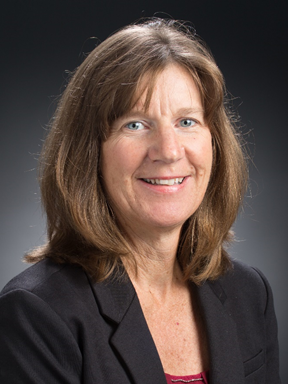 Pamela Patton is a Principal Professional Staff at the Johns Hopkins University Applied Physics Lab (APL). As a technical lead for the 5G Wireless Communications Lab, Pam is standing up a 5G security research environment utilizing Nokia and SDR RAN equipment to support non-standalone (NSA) and standalone (SA) network architectures connected to a virtualized core network utilizing NFV and SDN technologies. The lab builds on existing 4G/LTE infrastructure that she has utilized for various tactical use case studies, security architecture and vulnerability analysis, and performance assessments of secure VoIP in a contested RF and network environment. Prior to joining JHU/APL in 2012, she took on various communication engineering roles within the National Security Agency (13 years) and with defense contractors (12 years). Her focus has been primarily on network architecture, protocols, and security from 2G through the generations up to 5G and how those technologies may apply to DoD interests. She received her BS in Electrical Engineering from Virginia Tech and an MS in Telecommunications and Computers from George Washington University.
Pamela Patton is a Principal Professional Staff at the Johns Hopkins University Applied Physics Lab (APL). As a technical lead for the 5G Wireless Communications Lab, Pam is standing up a 5G security research environment utilizing Nokia and SDR RAN equipment to support non-standalone (NSA) and standalone (SA) network architectures connected to a virtualized core network utilizing NFV and SDN technologies. The lab builds on existing 4G/LTE infrastructure that she has utilized for various tactical use case studies, security architecture and vulnerability analysis, and performance assessments of secure VoIP in a contested RF and network environment. Prior to joining JHU/APL in 2012, she took on various communication engineering roles within the National Security Agency (13 years) and with defense contractors (12 years). Her focus has been primarily on network architecture, protocols, and security from 2G through the generations up to 5G and how those technologies may apply to DoD interests. She received her BS in Electrical Engineering from Virginia Tech and an MS in Telecommunications and Computers from George Washington University.
 Mr. Oscar Somerlock joined the Applied Physics Laboratory in 2014, where he is currently a member of the Senior Technical Staff. Prior to joining APL, he worked in the cellular industry for more than 20 years holding engineering and technical leadership positions at Samsung, Motorola, and Qualcomm. He also founded and served as President of Comware, Inc. He has been awarded patents in digital beamforming and wireless networking. Oscar holds an M.S. degree in Electrical and Computer Engineering from the Johns Hopkins University and MBA from the University of Maryland.
Mr. Oscar Somerlock joined the Applied Physics Laboratory in 2014, where he is currently a member of the Senior Technical Staff. Prior to joining APL, he worked in the cellular industry for more than 20 years holding engineering and technical leadership positions at Samsung, Motorola, and Qualcomm. He also founded and served as President of Comware, Inc. He has been awarded patents in digital beamforming and wireless networking. Oscar holds an M.S. degree in Electrical and Computer Engineering from the Johns Hopkins University and MBA from the University of Maryland.
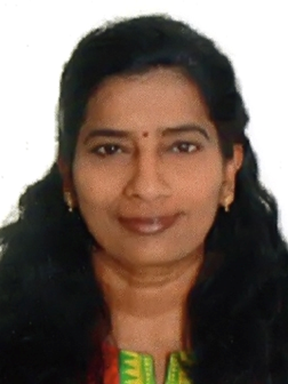
Dr. Bhuvaneswari Arunachalan is currently working as an Assistant professor in Department of Computer Applications, PSG College of Technology, Coimbatore, India. She is also a co-founder of Dotty Emergency Assistive care Inc, Canada and India, an organization that provides solutions to emergency/critical care unit of hospitals and ambulatory service units. She completed her postdoctoral research in the Visual Analytics Lab, OCAD University, Toronto, Canada and her PhD in Computer Science at University of New Brunswick, Canada. Her research is mainly focused on mobile technology, analytical algorithms, natural user interface design, multimodal interactions, and interactive visualizations. Her research contribution includes a mobile middleware for handheld devices that provides access to electronic patient records for Emergency Medical Services. In 2005 and 2008, she has been a delegate in ICT Going Global Team that visited India and France. She has developed and conducted several graduate and undergraduate courses, and supervised more than 10 graduate thesis and undergraduate projects. She has more than 35 publications in peer reviewed journals, conferences, and seminars, delivered several invited talks and workshops.
Timothy K. Asiedu, PhD is the Founder of TIM Technology Services Ltd, Ghana. He is an author and has a few books on Information / Cyber Security and E-Business to his credit. A chapter of Part Two of his book on Information Security focuses on Wireless Communication. His page is at: www.amazon.com/author/timothy.asiedu.
His career in IT spans over 25 years when he first took up a Supervisory role for a new IT system with Ghacem Ltd – Ghana. This is after obtaining his Bsc. (Hons) degree in Computer Science and Statistics from University of Ghana. Later, he had an opportunity to work with organizations like Alfa Laval Separation, A/S, Denmark; Consortium (CIHSD) as System Analyst; Clydestone Ghana Ltd and then DHL Ghana Ltd as Systems Administrator and Information Security Coordinator. In 2001, he founded TIM Technology Services Ltd.,Ghana and has been running the organization till today.
In 2008, he lectured in IT for the Business School of Maranatha University College, Sowutuom, Accra, Ghana. Timothy obtained a PhD with IPSI Belgrade, Ltd, Serbia – EU in Networking / Internet (e-Commerce, e-Business, e-Education, ......), from 2003-2008. He obtained his MBA with Akamai University, Hawaii, USA. He has had presentations in the area of Information Security, Networking and Internet related areas in USA, Italy and Germany for his research studies. He has also been involved in the activities of ISOC and IGF, UN.
Timothy is a member of IEEE and continues to research in the area of Future Networks.
 Robert (Rob) Bartholet is the supervisor of the Johns Hopkins University Applied Physics Laboratory’s (APL) Communications Systems Branch, which focuses on transforming the communications capabilities of APL's government sponsors to provide a decisive advantage in their critical missions. Bartholet joined APL as a communications systems engineer, serving in roles ranging from technical contributor, project manager, and organizational leader. Prior to joining the Laboratory, Bartholet completed 28 years of active duty in the U.S. Army, with three successful commands of field artillery units. He spearheaded the Army's efforts to build battlefield digital communications networks for tactical ground and air maneuver units, served as an assistant professor at the U.S. Military Academy at West Point, and is a plank owner of the Defense Information Systems Agency Command Center. Bartholet has a B.S. in electrical engineering from the U.S. Military Academy, an M.S. in computer science from the University of Virginia and an M.S. in strategic studies from the U.S. Army War College.
Robert (Rob) Bartholet is the supervisor of the Johns Hopkins University Applied Physics Laboratory’s (APL) Communications Systems Branch, which focuses on transforming the communications capabilities of APL's government sponsors to provide a decisive advantage in their critical missions. Bartholet joined APL as a communications systems engineer, serving in roles ranging from technical contributor, project manager, and organizational leader. Prior to joining the Laboratory, Bartholet completed 28 years of active duty in the U.S. Army, with three successful commands of field artillery units. He spearheaded the Army's efforts to build battlefield digital communications networks for tactical ground and air maneuver units, served as an assistant professor at the U.S. Military Academy at West Point, and is a plank owner of the Defense Information Systems Agency Command Center. Bartholet has a B.S. in electrical engineering from the U.S. Military Academy, an M.S. in computer science from the University of Virginia and an M.S. in strategic studies from the U.S. Army War College.
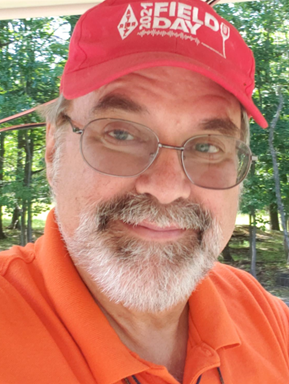 J. Gordon Beattie, Jr. is a Senior Principal Research Scientist/Engineer in the Chief Technology Office of VIAVI where he drives technology innovation across business units with focus on 5G, 6G and related communications technologies. He is a former Member of Technical Staff/Principal Technical Architect at AT&T Bell Labs/AT&T Labs where focused on service assurance systems and protocols. He has authored, or contributed to 137 granted U.S. Patents, and was granted AT&T’s Social Innovator Award for his leadership in inspiring colleagues to get involved in the work of Intellectual Property creation and protection. Gordon is a trained volunteer Communications Team Leader/Technician with the Passaic County, New Jersey Sheriff’s Department and an active licensed Amateur Radio Operator (W2TTT) since 1975. Gordon also contributed to the IEEE’s P1897 workgroup on Power Line Noise and serves as a member of the American Radio Relay League’s Electro-Magnetic Compatibility Committee.
J. Gordon Beattie, Jr. is a Senior Principal Research Scientist/Engineer in the Chief Technology Office of VIAVI where he drives technology innovation across business units with focus on 5G, 6G and related communications technologies. He is a former Member of Technical Staff/Principal Technical Architect at AT&T Bell Labs/AT&T Labs where focused on service assurance systems and protocols. He has authored, or contributed to 137 granted U.S. Patents, and was granted AT&T’s Social Innovator Award for his leadership in inspiring colleagues to get involved in the work of Intellectual Property creation and protection. Gordon is a trained volunteer Communications Team Leader/Technician with the Passaic County, New Jersey Sheriff’s Department and an active licensed Amateur Radio Operator (W2TTT) since 1975. Gordon also contributed to the IEEE’s P1897 workgroup on Power Line Noise and serves as a member of the American Radio Relay League’s Electro-Magnetic Compatibility Committee.
 Russell Becker serves as the Director, Office for Interoperability and Compatibility. He is also the acting Deputy, Innovative Systems Branch of DHS S&T’s Technology Centers Division which focuses on intelligent sensors and autonomous systems; resilient communications equipment, data, and networks; and enhanced biometrics and identity capabilities to enhance knowledge, advance state of the art, inform investments and drive actions in national threats, hazards, and risks. Prior to his role in DHS S&T, Russell served 21 years as an active duty US Marine Corps officer. For the first 5 years, Russell served as an Infantry Officer. He then served the remaining 16 years as a Communications Officer in several operational positions with a three-year stint as an Acquisitions Project Officer for narrow and wideband radio systems. Russell deployed once as an infantry platoon commander and once as Small Unit Weapons and Tactics Subject Matter Expert conducting Anti-terrorism and Force Protection assessments with the Joint Security Directorate Forward, US Central Command. As a Captain, Russell completed four combat deployments to Iraq. In his final tour as a Lieutenant Colonel, Russell led in two different billets within US European Command. He first led the Theater Satellite Communication, Nuclear Command, Control and Computers, Theater Frequency Spectrum and Communications Security offices as the Branch Chief, C4 Support Operations Division, Joint Command, Control, Communications, Computers (C4)/Cyber Directorate. For the final two and a half years, Russell moved to the Interoperability, Cyber Engagements & Exercises Division/ J67 and served as the US Senior exercise planner for NATO interoperability exercises Steadfast Cobalt 2017 and 2018 and US lead C4/Cyber planner for Exercise Trident Juncture 2018. Russell holds a Master of Science in Electrical Engineering from the Naval Postgraduate School, Monterey, CA.
Russell Becker serves as the Director, Office for Interoperability and Compatibility. He is also the acting Deputy, Innovative Systems Branch of DHS S&T’s Technology Centers Division which focuses on intelligent sensors and autonomous systems; resilient communications equipment, data, and networks; and enhanced biometrics and identity capabilities to enhance knowledge, advance state of the art, inform investments and drive actions in national threats, hazards, and risks. Prior to his role in DHS S&T, Russell served 21 years as an active duty US Marine Corps officer. For the first 5 years, Russell served as an Infantry Officer. He then served the remaining 16 years as a Communications Officer in several operational positions with a three-year stint as an Acquisitions Project Officer for narrow and wideband radio systems. Russell deployed once as an infantry platoon commander and once as Small Unit Weapons and Tactics Subject Matter Expert conducting Anti-terrorism and Force Protection assessments with the Joint Security Directorate Forward, US Central Command. As a Captain, Russell completed four combat deployments to Iraq. In his final tour as a Lieutenant Colonel, Russell led in two different billets within US European Command. He first led the Theater Satellite Communication, Nuclear Command, Control and Computers, Theater Frequency Spectrum and Communications Security offices as the Branch Chief, C4 Support Operations Division, Joint Command, Control, Communications, Computers (C4)/Cyber Directorate. For the final two and a half years, Russell moved to the Interoperability, Cyber Engagements & Exercises Division/ J67 and served as the US Senior exercise planner for NATO interoperability exercises Steadfast Cobalt 2017 and 2018 and US lead C4/Cyber planner for Exercise Trident Juncture 2018. Russell holds a Master of Science in Electrical Engineering from the Naval Postgraduate School, Monterey, CA.
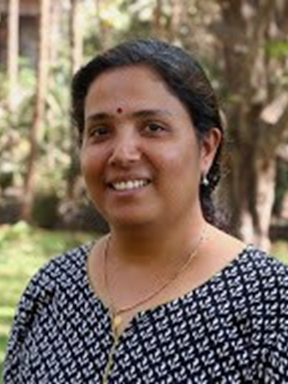 Dr. Sarbani Banerjee Belur, is currently the Asia Regional Coordinator for Association for Progressive Communications (APC) for the Community Networks Connecting the Unconnected project. She is also the Senior Research Scientist hosted by Spoken Tutorial project at the Indian Institute of Technology Bombay, Mumbai, India. She has been working in the domain of rural connectivity for the past 6 years and have been associated with the Gram Marg project in the Department of Electrical Engineering, IIT Bombay. Her current work involves increasing digital outreach to remote and rural areas of India, deployment of new technology alternatives for the middle and last mile internet connectivity, development of a sustainable models supporting Public - Private - Panchayat - Partnership (4-P model), seeding the growth of community networks, gender and access, developing community technologies and impact assessment studies of connectivity in the lives of people. The impact studies that she focuses on are based on gender, social and economic impacts of connectivity.
Dr. Sarbani Banerjee Belur, is currently the Asia Regional Coordinator for Association for Progressive Communications (APC) for the Community Networks Connecting the Unconnected project. She is also the Senior Research Scientist hosted by Spoken Tutorial project at the Indian Institute of Technology Bombay, Mumbai, India. She has been working in the domain of rural connectivity for the past 6 years and have been associated with the Gram Marg project in the Department of Electrical Engineering, IIT Bombay. Her current work involves increasing digital outreach to remote and rural areas of India, deployment of new technology alternatives for the middle and last mile internet connectivity, development of a sustainable models supporting Public - Private - Panchayat - Partnership (4-P model), seeding the growth of community networks, gender and access, developing community technologies and impact assessment studies of connectivity in the lives of people. The impact studies that she focuses on are based on gender, social and economic impacts of connectivity.
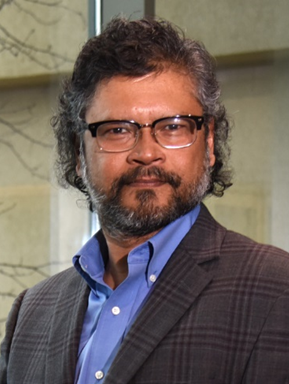 Dr. Arupjyoti (Arup) Bhuyan is a wireless researcher in the Idaho National Laboratory (INL) and the Technical Director of the INL Wireless Security Institute. The focus of his research is on secure implementation of future generations of wireless communications with scientific exploration and engineering innovations across the fields of wireless technology, cybersecurity, and computational science. Specific goals are to lead and focus wireless security research efforts for 5G and Beyond with national impact, to secure communications for a nationwide unmanned aerial system and for 5G spectrum sharing with distributed scheduling. Arup has extensive industry experience in wireless communications from his work before he joined INL in October, 2015. He received his Ph.D. in Engineering and Applied Sciences from Yale University. He is a senior member of IEEE.
Dr. Arupjyoti (Arup) Bhuyan is a wireless researcher in the Idaho National Laboratory (INL) and the Technical Director of the INL Wireless Security Institute. The focus of his research is on secure implementation of future generations of wireless communications with scientific exploration and engineering innovations across the fields of wireless technology, cybersecurity, and computational science. Specific goals are to lead and focus wireless security research efforts for 5G and Beyond with national impact, to secure communications for a nationwide unmanned aerial system and for 5G spectrum sharing with distributed scheduling. Arup has extensive industry experience in wireless communications from his work before he joined INL in October, 2015. He received his Ph.D. in Engineering and Applied Sciences from Yale University. He is a senior member of IEEE.
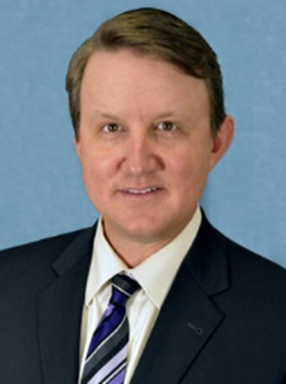
Mr. Jeffrey Bratcher is the Chief Network and Technology Officer of the FirstNet Authority. Mr. Bratcher is a key leader involved with the shaping of the technology for the Nationwide Public Safety Broadband Network (NPSBN). He led the formation of the FirstNet Authority technology teams as well as the state-of-the-art Innovation and Technology lab located at the FirstNet Authority office in Boulder, Colorado. Building upon his success as the Chief Technology Officer, Mr. Bratcher was also appointed to lead the network team overseeing the implementation of the nationwide FirstNet broadband network built with AT&T. Mr. Bratcher began his federal service in 2003 with the National Telecommunications and Information Administration (NTIA) Institute for Telecommunication Sciences (ITS) also located in Boulder, Colorado. Prior to joining federal service, he worked for ten years within the wireless private sector deploying several of the first digital cellular systems in U.S. and international markets. Mr. Bratcher received his BS in Electrical Engineering from Texas Tech University and his MS in Telecommunications from Southern Methodist University.
 Arsenia (Ersi) Chorti is a Professor at the École Nationale Supérieure de l'Électronique et de ses Applications (ENSEA), Head of the Information, Communications and Imaging (ICI) Group of the ETIS Lab UMR 8051 and a Visiting Scholar at Princeton and Essex Universities. Her research spans the areas of wireless communications and wireless systems security for 5G / 6G, with a particular focus on physical layer security. She is a Senior IEEE Member, member of the IEEE INGR on Security and of the IEEE P1951.1 standardization workgroup (Smart Cities) and Chair of the IEEE Focus Group on Physical Layer Security.
Arsenia (Ersi) Chorti is a Professor at the École Nationale Supérieure de l'Électronique et de ses Applications (ENSEA), Head of the Information, Communications and Imaging (ICI) Group of the ETIS Lab UMR 8051 and a Visiting Scholar at Princeton and Essex Universities. Her research spans the areas of wireless communications and wireless systems security for 5G / 6G, with a particular focus on physical layer security. She is a Senior IEEE Member, member of the IEEE INGR on Security and of the IEEE P1951.1 standardization workgroup (Smart Cities) and Chair of the IEEE Focus Group on Physical Layer Security.
 Charles Clancy is senior vice president, general manager of MITRE Labs, and chief futurist. He is responsible for sparking innovative disruption, accelerating risk-taking and discovery, and delivering real-time technology capabilities and execution through the company’s laboratories, solution platforms, and MITRE Fellows program. He leads technical innovation to anticipate and meet the future demands of government sponsors and industry and academic partners.
Charles Clancy is senior vice president, general manager of MITRE Labs, and chief futurist. He is responsible for sparking innovative disruption, accelerating risk-taking and discovery, and delivering real-time technology capabilities and execution through the company’s laboratories, solution platforms, and MITRE Fellows program. He leads technical innovation to anticipate and meet the future demands of government sponsors and industry and academic partners.
Clancy is an internationally recognized expert on topics at the intersection of wireless, cybersecurity, and artificial intelligence. Before joining MITRE in 2019 as vice president for intelligence programs, Clancy served as the Bradley Professor of Cybersecurity at Virginia Tech, and executive director at the Hume Center for National Security and Technology. There, he led Virginia Tech’s research and experiential learning programs in defense and intelligence.
Clancy started his career at the National Security Agency, filling a variety of research, engineering, and operations roles, with a focus on wireless communications. He has co-authored more than 250 patents and academic publications, as well as six books. He co- founded several venture-backed security startup companies that apply commercial innovation to national security challenges.
He serves as a member of the AFCEA Board of Directors’ Executive Committee, the AFCEA Intelligence Committee, the Intelligence and National Security Alliance Advisory Committee, the Systems Engineering Research Center Advisory Board, the Alliance for Telecommunications Industry Solutions NextG Alliance, the Center for New American Security Task Force on Artificial Intelligence and National Security, and the International Advisory Panel for Singapore Manufacturing, Trade, and Connectivity. He also serves on advisory boards at Howard University, Norfolk State University, North Carolina A&T State University, and Virginia Tech.
Clancy holds a bachelor’s degree in computer engineering from the Rose-Hulman Institute of Technology, a master’s degree in electrical engineering from the University of Illinois at Urbana- Champaign, and a doctorate in computer science from the University of Maryland, College Park.
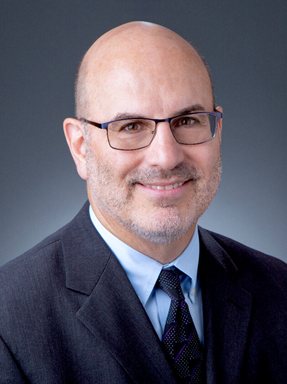 John Contestabile – Mr. Contestabile enjoyed a 30-year career in Maryland state government holding a variety of positions including Deputy Homeland Security Advisor, Statewide Public Safety Interoperable Communications Director, and retired as Acting Assistant Secretary of the Maryland Department of Transportation. In his career at MDOT, he was responsible for the engineering/procurement/emergency management and homeland security functions. After leaving Maryland State government, he joined the Johns Hopkins University Applied Physics Lab as Program Manager of their Emergency Communications Program. In that capacity, he executed projects with various federal sponsors to include the Department of Homeland Security Science and Technology Directorate, the Cyber Infrastructure Security Administration, the Federal Emergency Management Agency, and FirstNet. After 10 years at JHU/APL, he left to join Skyline Technology Solutions, where he is presently Director of Public Safety Solutions. An engineer by training, he has executed projects related to Geographic Information Systems, Land Mobile Radio, Computer Aided Dispatch, Television Datacasting, Video interoperability and 5G. He has worked with numerous public safety entities ranging from police departments [Houston, NYC, Chicago, Adams Co. IN., Grant Co. WA.], emergency management agencies, fusion centers, and Public Safety Answering Points [PSAP]. He is the author of numerous public safety communications articles, the most recent of which was in support of JHU/APL preparing the DHS CISA “Information Sharing Framework” report published in the fall of 2021.
John Contestabile – Mr. Contestabile enjoyed a 30-year career in Maryland state government holding a variety of positions including Deputy Homeland Security Advisor, Statewide Public Safety Interoperable Communications Director, and retired as Acting Assistant Secretary of the Maryland Department of Transportation. In his career at MDOT, he was responsible for the engineering/procurement/emergency management and homeland security functions. After leaving Maryland State government, he joined the Johns Hopkins University Applied Physics Lab as Program Manager of their Emergency Communications Program. In that capacity, he executed projects with various federal sponsors to include the Department of Homeland Security Science and Technology Directorate, the Cyber Infrastructure Security Administration, the Federal Emergency Management Agency, and FirstNet. After 10 years at JHU/APL, he left to join Skyline Technology Solutions, where he is presently Director of Public Safety Solutions. An engineer by training, he has executed projects related to Geographic Information Systems, Land Mobile Radio, Computer Aided Dispatch, Television Datacasting, Video interoperability and 5G. He has worked with numerous public safety entities ranging from police departments [Houston, NYC, Chicago, Adams Co. IN., Grant Co. WA.], emergency management agencies, fusion centers, and Public Safety Answering Points [PSAP]. He is the author of numerous public safety communications articles, the most recent of which was in support of JHU/APL preparing the DHS CISA “Information Sharing Framework” report published in the fall of 2021.
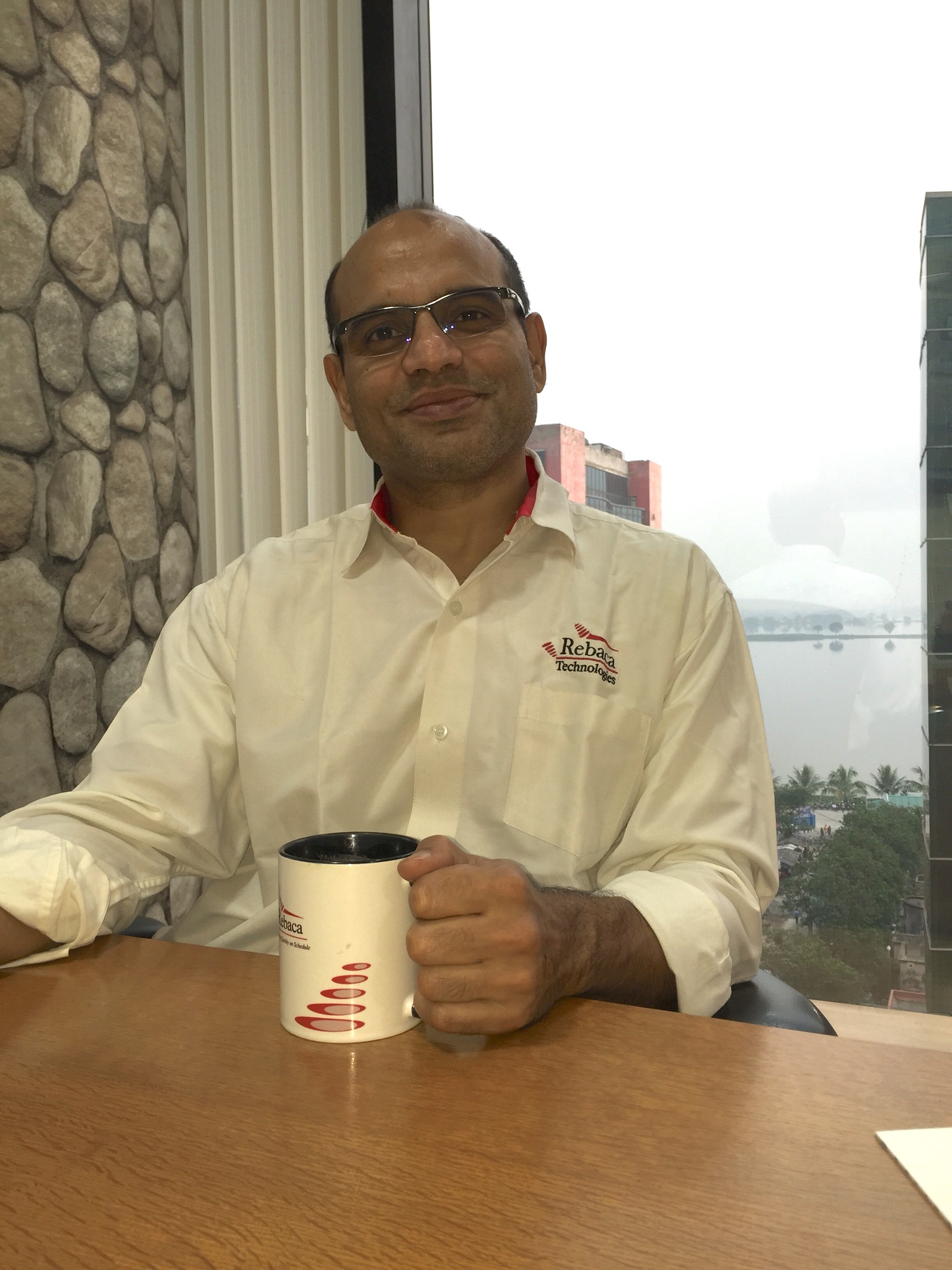 Samir K. Chatterjee is 30 years veteran in the field of Software and Telecommunication. He started his career in the research and development group of NYNEX R&D Labs, an extension of Bellcore. Samir is the founder & CEO of Rebaca technologies (rebaca.com), a niche software development company focused on developing solutions and products on Mobile Network technology (4G & 5G), Video Delivery solutions for DTV & OTT, Analytics and Test Automation. The companies product ABot facilitates 4G & 5G end-to-end system tests. At Rebaca, he has successfully developed various network test automation solutions for Operators and OEMs for decades. He is well aware of the requirements and the challenges of this domain. His exposure and knowledge in this domain are vast and well respected. Samir is involved in several standards bodies and Opensource initiatives like LFN, TIP Magma, Akraino Edge, etc. Rebaca has been an active contributor to these organizations for several years.
Samir K. Chatterjee is 30 years veteran in the field of Software and Telecommunication. He started his career in the research and development group of NYNEX R&D Labs, an extension of Bellcore. Samir is the founder & CEO of Rebaca technologies (rebaca.com), a niche software development company focused on developing solutions and products on Mobile Network technology (4G & 5G), Video Delivery solutions for DTV & OTT, Analytics and Test Automation. The companies product ABot facilitates 4G & 5G end-to-end system tests. At Rebaca, he has successfully developed various network test automation solutions for Operators and OEMs for decades. He is well aware of the requirements and the challenges of this domain. His exposure and knowledge in this domain are vast and well respected. Samir is involved in several standards bodies and Opensource initiatives like LFN, TIP Magma, Akraino Edge, etc. Rebaca has been an active contributor to these organizations for several years.
 Periklis Chatzimisios serves as Professor in the Department of Information and Electronic Engineering of the International Hellenic University (Greece). He has been recently awarded the title of Researcher Professor by the Department of Electrical and Computer Engineering of the University of New Mexico (USA). He is also a Visiting Fellow in the Faculty of Science & Technology, at Bournemouth University (UK). Dr. Chatzimisios is/has been involved in several standardization and IEEE activities serving as a Member of IEEE ComSoc Education Services Board, Member of the IEEE ComSoc Standards Program Development Board and Industry Outreach Board under the IEEE Communication Society (ComSoc). He is the Chair of the Communications Chapter and Professional Activities for the IEEE Greece Section and also serves as the Chair of ComSoc Technical Committee on Information Infrastructure and Networking (TCIIN), the Vice Chair of ComSoc Technical Committee on Big Data (TCBD) and an active member of the IEEE Future Networks (5G) Initiative.
Periklis Chatzimisios serves as Professor in the Department of Information and Electronic Engineering of the International Hellenic University (Greece). He has been recently awarded the title of Researcher Professor by the Department of Electrical and Computer Engineering of the University of New Mexico (USA). He is also a Visiting Fellow in the Faculty of Science & Technology, at Bournemouth University (UK). Dr. Chatzimisios is/has been involved in several standardization and IEEE activities serving as a Member of IEEE ComSoc Education Services Board, Member of the IEEE ComSoc Standards Program Development Board and Industry Outreach Board under the IEEE Communication Society (ComSoc). He is the Chair of the Communications Chapter and Professional Activities for the IEEE Greece Section and also serves as the Chair of ComSoc Technical Committee on Information Infrastructure and Networking (TCIIN), the Vice Chair of ComSoc Technical Committee on Big Data (TCBD) and an active member of the IEEE Future Networks (5G) Initiative.
 Jyh-Cheng Chen (Fellow, IEEE) received the Ph.D. degree from the State University of New York at Buffalo in 1998. He was a Research Scientist with Bellcore/Telcordia Technologies, Morristown, NJ, USA, from 1998 to 2001, and a Senior Scientist with Telcordia Technologies, Piscataway, NJ, USA, from 2008 to 2010. He was with the Department of Computer Science, National Tsing Hua University (NTHU), Hsinchu, Taiwan, as an Assistant Professor, an Associate Professor, and a Full Professor from 2001 to 2008. He has been a Faculty Member with National Yang Ming Chiao Tung University (NYCU), formerly National Chiao Tung University (NCTU), since 2010. He is currently the Chair Professor with the Department of Computer Science, and the Dean of the College of Computer Science, NYCU.
Jyh-Cheng Chen (Fellow, IEEE) received the Ph.D. degree from the State University of New York at Buffalo in 1998. He was a Research Scientist with Bellcore/Telcordia Technologies, Morristown, NJ, USA, from 1998 to 2001, and a Senior Scientist with Telcordia Technologies, Piscataway, NJ, USA, from 2008 to 2010. He was with the Department of Computer Science, National Tsing Hua University (NTHU), Hsinchu, Taiwan, as an Assistant Professor, an Associate Professor, and a Full Professor from 2001 to 2008. He has been a Faculty Member with National Yang Ming Chiao Tung University (NYCU), formerly National Chiao Tung University (NCTU), since 2010. He is currently the Chair Professor with the Department of Computer Science, and the Dean of the College of Computer Science, NYCU.
Dr. Chen is a Distinguished Member of the Association for Computing Machinery (ACM). He was a member of the Fellows Evaluation Committee, IEEE Computer Society. He has received numerous awards, including the Outstanding Teaching Award from both NCTU and NTHU, the Outstanding I.T. Elite Award, Taiwan, the Mentor of Merit Award from NCTU, the Medal of Honor and the K. T. Li Breakthrough Award from the Institute of Information and Computing Machinery, the Outstanding Engineering Professor Award from the Chinese Institute of Engineers, the Outstanding Research Award from the Ministry of Science and Technology, the Best Paper Award for Young Scholars from the IEEE Communications Society Taipei and Tainan Chapters, and the IEEE Information Theory Society Taipei Chapter, and the Telcordia CEO Award.
 Paul Corwin has an MS in Computer Science from California Polytechnic State University in San Luis Obispo, California. Paul’s professional experience spans embedded communication and sensor systems engineering and mobile application development.
Paul Corwin has an MS in Computer Science from California Polytechnic State University in San Luis Obispo, California. Paul’s professional experience spans embedded communication and sensor systems engineering and mobile application development.
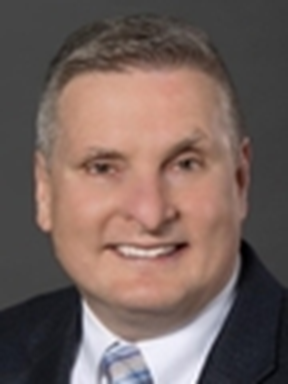 Brian Daly: As Assistant Vice President for Standards & Industry Alliances for AT&T, Brian oversees AT&T’s strategy and leadership in global industry standards. Brian is a technology visionary and thought leader with knowledge of the global standards industry landscape/leadership. Brian has a broad technology perspective including 5 to 10-year trends, with focus on emerging technologies for 5G and beyond including public safety/mission critical services for FirstNet; earthquake early warning and wireless emergency alerts; C-V2X and UAS/UAVs; cybersecurity, NSEP, and critical infrastructure protection. Brian is engaged in programs with the DHS, DISA, and DoD, and is a leading contributor to the Alliance for Telecommunication Industry Solutions (ATIS) Board, TOPS Council and Standards Committee initiatives, resulting in the implementation of key industry standards. Brian is on the Executive Committee of the National Spectrum Consortium and holds appointments to the FCC’s Technological Advisory Council (TAC) and Communications Reliability, Security, and Interoperability Council (CSRIC). Brian also is a member of the FBI’s Infragard partnership. Brian holds Board positions on the National Public Safety Communications Council (NPSTC) and the IEEE International Standards and Technology Organization (IEEE-ISTO). Brian’s industry leadership roles include Co-chair of the Next G Alliance Steering Group, co-chair of the O-Ran Alliance Standards Development Focus Group, Chair of the GSM Association’s North American Fraud Forum and Security Group, and former co-chair of the ANSI Unmanned Aircraft Systems Standardization Collaborative Critical Infrastructure & Environment working group.
Brian Daly: As Assistant Vice President for Standards & Industry Alliances for AT&T, Brian oversees AT&T’s strategy and leadership in global industry standards. Brian is a technology visionary and thought leader with knowledge of the global standards industry landscape/leadership. Brian has a broad technology perspective including 5 to 10-year trends, with focus on emerging technologies for 5G and beyond including public safety/mission critical services for FirstNet; earthquake early warning and wireless emergency alerts; C-V2X and UAS/UAVs; cybersecurity, NSEP, and critical infrastructure protection. Brian is engaged in programs with the DHS, DISA, and DoD, and is a leading contributor to the Alliance for Telecommunication Industry Solutions (ATIS) Board, TOPS Council and Standards Committee initiatives, resulting in the implementation of key industry standards. Brian is on the Executive Committee of the National Spectrum Consortium and holds appointments to the FCC’s Technological Advisory Council (TAC) and Communications Reliability, Security, and Interoperability Council (CSRIC). Brian also is a member of the FBI’s Infragard partnership. Brian holds Board positions on the National Public Safety Communications Council (NPSTC) and the IEEE International Standards and Technology Organization (IEEE-ISTO). Brian’s industry leadership roles include Co-chair of the Next G Alliance Steering Group, co-chair of the O-Ran Alliance Standards Development Focus Group, Chair of the GSM Association’s North American Fraud Forum and Security Group, and former co-chair of the ANSI Unmanned Aircraft Systems Standardization Collaborative Critical Infrastructure & Environment working group.
Brian received the B.S.E and M.S. degrees in electrical engineering from Arizona State University with a focus on communication systems and advanced electromagnetic engineering. Brian is the AT&T coordinator for the Department of Homeland Security SHAred RESources (SHARES) High Frequency (HF) Radio Program. Brian received the ATIS President’s Award and the ANSI Meritorious Service Award in recognition of his career creating standards across the communications spectrum including 3GPP, and the NG911 Institute Industry/Private Sector Award for his leadership in emergency communications. Brian holds over 180 issued patents in telecommunications, public safety, and cybersecurity.
Dr. Subir Das is a Chief Scientist at Peraton Labs, Basking Ridge, New Jersey, USA and has more than 25 years of research and development experience. His areas of interests are Mobile Wireless IP Networking (3G/4G/5G), Low power Personal Area Networking, WLAN and Edge Networking, Industrial Control System Security, and network and Internet of Things (IoT) security. Dr. Das is responsible for developing strategic programs, researching new technologies and transitioning such technologies. Dr. Das is also a leading contributor to various Standards (e.g., IEEE, IETF, 3GPP and ZigBee). He is currently leading the NS/EP priority access activities in IEEE 802.11 and in Wi-Fi Alliance. He is also an Executive Member of the IEEE 802 LAN/MAN Standards Committee and holds a leadership position in the ZigBee Alliance. Dr. Das contributes in developing protocols in IETF and held IETF leadership positions in the past. He was also actively involved in developing Cellular (3G/4G (LTE)) networking technologies in 3GPP. He has published nearly 100 papers, 5 IETF RFCs and has been granted 30 US patents. Dr. Das is a recipient of the 2009 IEEE Region I Award for outstanding contribution to Next Generation Wireless Networks, Protocols and its Standardization Efforts. He served as a review member in the National Science Foundation, USA, and the National Science and Engineering Council, Canada award review committees. Dr. Das is a frequent speaker and an organizer of Industry Panels in IEEE and other international conferences. He is a member of the IEEE and a reviewer of IEEE and ACM journals and technical magazines.

Rob Dew, serves as the Senior Technologist Advisor for Emergency Communications within the Cybersecurity and Infrastructure Security Agency (CISA) since July 2018. In this capacity, Rob provides overall technical advisement on design, development, testing, and deployment of priority and interoperability of Next Generation Network Priority Services (NGN-PS), Wireless Priority Service (WPS), Long Term Evolution (LTE) transition to 5G, secure data exchange and Internet-of-Things (loT) capabilities for emergency communications stakeholders. Previous to this assignment, he served as a Wireless Broadband Subject Matter Expert (SME) and Electronics Engineer in the Office of Emergency Communications (OEC) providing engineering and managerial leadership, governance and policy, consultation, and expertise to emergency communications for National Security and Emergency Preparedness (NS/EP) personnel and Public Safety first responders and stakeholders with guidance, research, development, test, and evaluation of wireline and wireless broadband networks.
Prior to joining the OEC in 2015, Rob spent over 20 years in private industry in technologist, technical director, project management, and senior engineering positions for Global 500 and Fortune 500 service providers and vendors, Federal agencies, and consulting firms such as DHS, AirTouch International, Sprint-Nextel, Ericsson, Telefonica, Qualcomm, LCC, Leidos, SAIC and Marconi. Rob managed and engineered from concept to design to operational capability projects worldwide in excess of $USD 5 billion servicing over 300 million subscribers while managing in excess of 2,000 staff comprised of directors, managers, engineers, and analysts in the United States, Europe, Latin America, the Middle East, and Asia.
Rob holds a B.S. in Electrical Engineering from Virginia Tech and a M.S. in Engineering Management from The George Washington University.
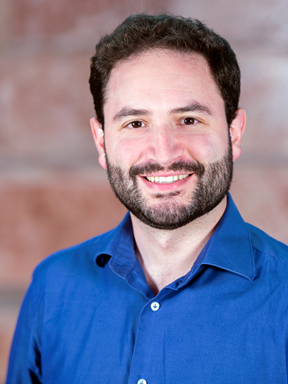 Nicola di Pietro received the B.S. degree in mathematics from the University of Padova, Italy, in 2008. In 2010, he received the M.S. degree in mathematics jointly from the University of Padova, Italy, and the University of Bordeaux, France, within the framework of the international ALGANT program. He received the Ph.D. degree in mathematics from the University of Bordeaux, France, in 2014.
Nicola di Pietro received the B.S. degree in mathematics from the University of Padova, Italy, in 2008. In 2010, he received the M.S. degree in mathematics jointly from the University of Padova, Italy, and the University of Bordeaux, France, within the framework of the international ALGANT program. He received the Ph.D. degree in mathematics from the University of Bordeaux, France, in 2014.
During the years of his doctoral studies, he was a Research Engineer with the European R&D Center of Mitsubishi Electric in Rennes, France. From 2014 to 2016, he was an Associate Post-Doctoral Fellow at Texas A&M University at Qatar. From 2017 to 2021, he was a Research Engineer with CEA LETI in Grenoble, France. He is now a System Engineer at Athonet, Italy.
He is the authors of several papers and patents, and his research interests span through 5G networks, edge computing, information theory, and lattice-based error-correcting codes.
George Elmasry has a Ph. D. in Electrical and Computer Engineering from The New Jersey Institute of Technology with extensive industry and academic experience. George is the winner of the Hashimoto Prize for achievement and academic excellence and is the sole author of two books entitled "Tactical Wireless Communications and Networks, Design Concepts and Challenges," and “Dynamic Spectrum Access Decisions: Local, Distributed, Centralized and Hybrid Design”.
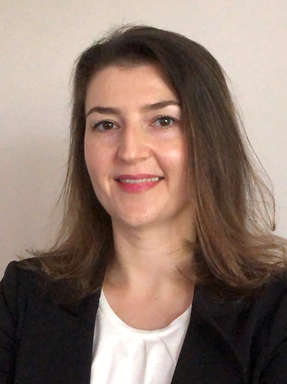 Dr. Tugba Erpek is a Lead Scientist at the Networks and Security Division at Intelligent Automation, a BlueHalo Company, where she is also the Network Communications Technical Area Lead. She is an Adjunct Research Professor at the Hume Center at Virginia Tech.She received her Ph.D. degree in Electrical Engineering from Virginia Tech. She has been developing machine/deep learning algorithms to improve the performance, situational awareness and security of wireless communications systems. Her R&D work covers wireless communications and networks, security, resource allocation, 5G and beyond communications, machine learning, and adversarial machine learning. She has published extensively in these areas. She has been serving as a TPC member and reviewer for major IEEE conferences and journals.
Dr. Tugba Erpek is a Lead Scientist at the Networks and Security Division at Intelligent Automation, a BlueHalo Company, where she is also the Network Communications Technical Area Lead. She is an Adjunct Research Professor at the Hume Center at Virginia Tech.She received her Ph.D. degree in Electrical Engineering from Virginia Tech. She has been developing machine/deep learning algorithms to improve the performance, situational awareness and security of wireless communications systems. Her R&D work covers wireless communications and networks, security, resource allocation, 5G and beyond communications, machine learning, and adversarial machine learning. She has published extensively in these areas. She has been serving as a TPC member and reviewer for major IEEE conferences and journals.
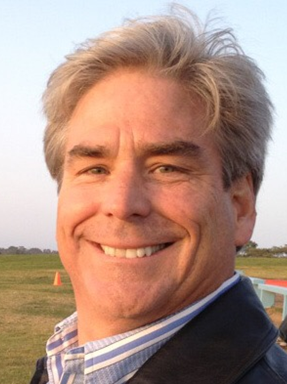 Mr. Scott Fox is the Lead Sr. Technical Advisor to the DoD OUSD(R&E) “5G & Beyond Initiative” at the Pentagon. In this role, Scott provides technical and strategic advice related to the DoD’s efforts to modernize our nation’s warfighting capabilities and enhance National Security, specifically leveraging and applying 5G’s (and beyond) advanced capabilities and solutions.
Mr. Scott Fox is the Lead Sr. Technical Advisor to the DoD OUSD(R&E) “5G & Beyond Initiative” at the Pentagon. In this role, Scott provides technical and strategic advice related to the DoD’s efforts to modernize our nation’s warfighting capabilities and enhance National Security, specifically leveraging and applying 5G’s (and beyond) advanced capabilities and solutions.
Having spent over 4 decades in key executive leadership positions across the wireless, telecommunications, and start-up worlds, Scott knows what it takes to build successful companies and deliver high quality complex solutions in environments of rapid change. A visionary and forward-thinking strategist, Scott has been the Chief Technology Officer (CTO) for BellSouth & Cingular, Chairman of the GSM Association (the global Industry Association of Commercial Wireless Operators from 220 countries of the world), Group President – WFII (Took public on the NASDAQ), Lead Consultant for FirstNet (NTIA), to name just a few, and has served as a Board Member for over 30+ public & private companies.
Scott also serves as the Director – Collaboration, Innovation, and Commercialization for SpectrumX, an NSF-funded “National Center for Spectrum Innovation” tasked with helping solve our nation’s most vexing spectrum-related challenges.
In his personal time, Scott is an Entrepreneur-in-Residence (EIR) at University of Colorado Boulder’s Venture Partners, enjoys living and playing in Boulder, CO, and is an active investor and mentor.
David Garbin has over 50 years of experience in the telecommunications and networking field, and joined Noblis in 1991. A major focus of his career has been on the design and economic analysis of large networks, both for carriers and their customers. He has a BS and an MS from the Massachusetts Institute of Technology.
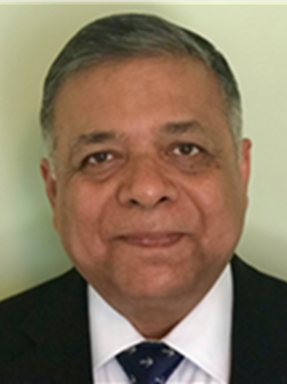 Amitabha (Amitava) Ghosh (F’15) is a Nokia Fellow and Head, Radio Interface Group at Nokia Bell Labs. He joined Motorola in 1990 after receiving his Ph.D in Electrical Engineering from Southern Methodist University, Dallas. Since joining Motorola he worked on multiple wireless technologies starting from IS-95, cdma-2000, 1xEV-DV/1XTREME, 1xEV-DO, UMTS, HSPA, 802.16e/WiMAX and 3GPP LTE. He has 60 issued patents, has written multiple book chapters and has authored numerous external and internal technical papers. He is currently working on 5G Evolution and 6G technologies. Recently, he was elected chair of the NextGA (an US 6G initiative) National Roadmap Working Group. His research interests are in the area of digital communications, signal processing and wireless communications. He is the recipient of 2016 IEEE Stephen O. Rice and 2017 Neal Shephard prize, member of IEEE Access editorial board and co-author of the book titled “Essentials of LTE and LTE-A”.
Amitabha (Amitava) Ghosh (F’15) is a Nokia Fellow and Head, Radio Interface Group at Nokia Bell Labs. He joined Motorola in 1990 after receiving his Ph.D in Electrical Engineering from Southern Methodist University, Dallas. Since joining Motorola he worked on multiple wireless technologies starting from IS-95, cdma-2000, 1xEV-DV/1XTREME, 1xEV-DO, UMTS, HSPA, 802.16e/WiMAX and 3GPP LTE. He has 60 issued patents, has written multiple book chapters and has authored numerous external and internal technical papers. He is currently working on 5G Evolution and 6G technologies. Recently, he was elected chair of the NextGA (an US 6G initiative) National Roadmap Working Group. His research interests are in the area of digital communications, signal processing and wireless communications. He is the recipient of 2016 IEEE Stephen O. Rice and 2017 Neal Shephard prize, member of IEEE Access editorial board and co-author of the book titled “Essentials of LTE and LTE-A”.
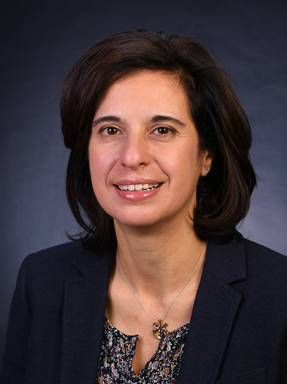
Nada Golmie received her Ph.D. in computer science from the University of Maryland at College Park. Since 1993, she has been a research engineer at the National Institute of Standards and Technology. She is a NIST Fellow and is currently the chief of the wireless networks division in the Communications Technology Laboratory. Her research in media access control and protocols for wireless networks led to over 100 technical papers presented at professional conferences, journals, and contributed to international standard organizations and industry led consortia. She is the author of “Coexistence in Wireless Networks: Challenges and System-level Solutions in the Unlicensed Bands," published by Cambridge University Press (2006). She leads several projects related to the modeling and evaluation of future generation wireless systems and protocols and serves as a co-chair for the Next5G Channel Model Alliance.
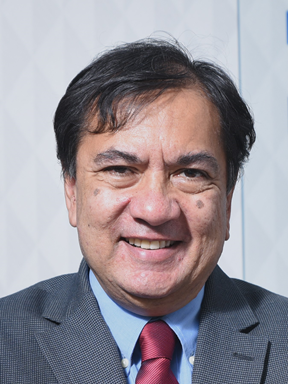 Dr. Inder Gopal is the CEO of IUDX Program and is also an Industry Professor at IISc. He was previously Vice President of Software at Ericsson, where he was instrumental in launching their Edge computing efforts. Before that, he was Vice President of Networking at IBM, where he had responsibility for all of IBM’s hardware and software networking products. He has also served as Chief Architect of AT&T and Chief Technology Officer of Prodigy.
Dr. Inder Gopal is the CEO of IUDX Program and is also an Industry Professor at IISc. He was previously Vice President of Software at Ericsson, where he was instrumental in launching their Edge computing efforts. Before that, he was Vice President of Networking at IBM, where he had responsibility for all of IBM’s hardware and software networking products. He has also served as Chief Architect of AT&T and Chief Technology Officer of Prodigy.
He has founded, built-up, and successfully sold two venture-funded start-up companies, ReefEdge and Iptivia, and is an investor and board member in a few others. He served as the Founding Chairman of a leading open source networking software group, OpenDaylight, recruiting dozens of top-tier companies to participate.
Inder has also had a distinguished research career in the area of computer networks, with 20 patents and more than 70 technical publications to his credit. He worked at the IBM T.J. Watson Research Centre, earning two IBM Outstanding Innovation Awards. He has served as editor of several technical journals and was elected Fellow of the IEEE. He has a PhD from Columbia University, New York and a BA from Oxford University, England.
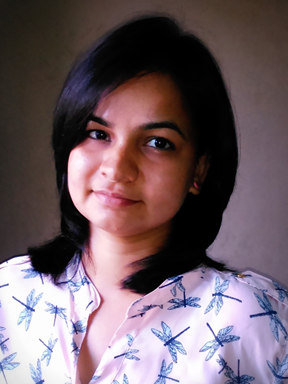 Sneihil Gopal received the B.Tech degree from Uttar Pradesh Technical University, the M.Tech (Gold medalist) degree from NIT, Kurukshetra, and the Ph.D. degree from IIIT-Delhi, all in Electronics and Communications Engineering in 2009, 2013 and 2021, respectively. She is presently working as a Post Doctoral Fellow at Georgetown University and Associate in the Wireless Networks Division in CTL at NIST, Gaithersburg. Her research interests are in the general area of communications and networking, including dynamic spectrum sharing, age of information, wireless network optimization, game theory, and internet economics.
Sneihil Gopal received the B.Tech degree from Uttar Pradesh Technical University, the M.Tech (Gold medalist) degree from NIT, Kurukshetra, and the Ph.D. degree from IIIT-Delhi, all in Electronics and Communications Engineering in 2009, 2013 and 2021, respectively. She is presently working as a Post Doctoral Fellow at Georgetown University and Associate in the Wireless Networks Division in CTL at NIST, Gaithersburg. Her research interests are in the general area of communications and networking, including dynamic spectrum sharing, age of information, wireless network optimization, game theory, and internet economics.
Steven Gordon has served as an engineer and technical manager with over 30 years of experience in the areas of telecommunications, cellular technologies, IP engineering, and modeling and simulation. A major focus has been the design, architecture, capacity planning, security and performance analyses of Internet Protocol (IP) carrier networks and 3G/4G/5G networks. He has a BS and an MS in Computer Engineering from Case Western Reserve University, and joined Noblis in 2004.
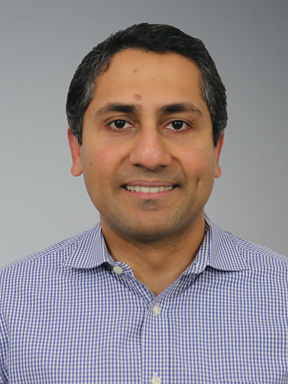
Abhimanyu (Manu) Gosain is a Technical Program Director for PAWR, Senior Director for Institute of Wireless Internet of Things at Northeastern University, Founding Director for OpenAirX-Labs and SETA for DoD OUSD Innovate Beyond5G Program (IB5G). He is in charge of setting strategic goals and the research agenda for a $100M public-private partnership for the NSF Platforms for Advanced Wireless Research (PAWR) program and $25M DARPA Colosseum program. He serves as a Board Member for the OpenAirInterface Software Alliance, Founding member for Magma Core Foundation, University representative for O-RAN Alliance, Telecom Infra Project, NextG Alliance and co-chair on organizing committee and program committees for 6GSymposium, EuCNC,IEEE InfoCom and ACM WinTech. His numerous professional publications and experience exemplify use-inspired basic research in the field of networking technologies such as LTE, 5G, AI/ML, edge computing and Internet of Things. He is an IEEE Senior Member. He received his M.S. degree from Tufts University and M.B.A. from Boston University with High Honors.
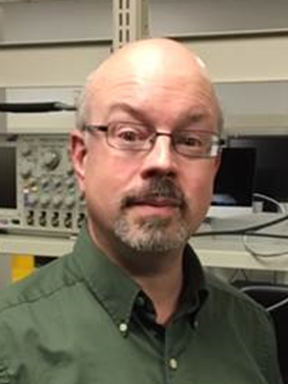 David Griffith is with the Wireless Networks Division in the Communications Technology Laboratory (CTL) at the National Institute of Standards and Technology (NIST). Prior to NIST, he was a senior engineer at Raytheon, where he performed modeling and simulation studies of satellite communications systems. He received the Ph.D. degree in electrical engineering from the University of Delaware in 1998. He has authored or co-authored nearly 100 publications, including two book chapters, on non-linear signal processing, satellite communications, optical communications, smart grid communications, public safety communications, and machine learning for communications in the Industrial Internet of Things (IIoT). His current work includes modeling wireless communication systems and measurement uncertainty in machine learning systems. His work includes communications for the smart grid and the Internet of Things (IoT), performance analysis and metrics for public safety communications, including analysis of coexistence with other radio access technologies, and resource allocation for 5G wireless networks using machine learning. He has been a Senior Member of the IEEE since 2004. He served as Co-Editor of the Standards Section of Optical Networks Magazine from 2000 to 2003 and was Technical Program Co-Chair of the Optical Networking Symposium of the Second Annual International Conference on Broadband Networks (BroadNets 2005). He is co-chairing the Workshop on Spectrum Sharing Technology for Next Generation Communications at the 2022 IEEE International Conference on Communications (ICC).
David Griffith is with the Wireless Networks Division in the Communications Technology Laboratory (CTL) at the National Institute of Standards and Technology (NIST). Prior to NIST, he was a senior engineer at Raytheon, where he performed modeling and simulation studies of satellite communications systems. He received the Ph.D. degree in electrical engineering from the University of Delaware in 1998. He has authored or co-authored nearly 100 publications, including two book chapters, on non-linear signal processing, satellite communications, optical communications, smart grid communications, public safety communications, and machine learning for communications in the Industrial Internet of Things (IIoT). His current work includes modeling wireless communication systems and measurement uncertainty in machine learning systems. His work includes communications for the smart grid and the Internet of Things (IoT), performance analysis and metrics for public safety communications, including analysis of coexistence with other radio access technologies, and resource allocation for 5G wireless networks using machine learning. He has been a Senior Member of the IEEE since 2004. He served as Co-Editor of the Standards Section of Optical Networks Magazine from 2000 to 2003 and was Technical Program Co-Chair of the Optical Networking Symposium of the Second Annual International Conference on Broadband Networks (BroadNets 2005). He is co-chairing the Workshop on Spectrum Sharing Technology for Next Generation Communications at the 2022 IEEE International Conference on Communications (ICC).
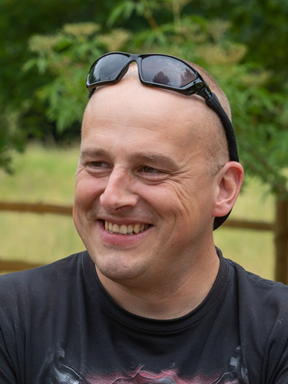 Maciej Gucma. I work as a Head of Department of Marine Navigation at Navigation Faculty Maritime University of Szczecin (MUS), Poland. I graduated MUS in 2003, while in 2006 in Warsaw University of Technology (WUT) I defended my PhD Thesis related to visualization on shipboard piloting electronic charts. In 2015 I become professor after habilitation on WUT. Im particularly interested in methods and models of support devices for shipping as well as high speed communication for different systems. As an engineer I work for several shipping companies from cadet to chief officer on sea going vessels.
Maciej Gucma. I work as a Head of Department of Marine Navigation at Navigation Faculty Maritime University of Szczecin (MUS), Poland. I graduated MUS in 2003, while in 2006 in Warsaw University of Technology (WUT) I defended my PhD Thesis related to visualization on shipboard piloting electronic charts. In 2015 I become professor after habilitation on WUT. Im particularly interested in methods and models of support devices for shipping as well as high speed communication for different systems. As an engineer I work for several shipping companies from cadet to chief officer on sea going vessels.

Dr. Ismail Guvenc (Fellow, IEEE) received his Ph.D. degree in electrical engineering from the University of South Florida in 2006. He was with Mitsubishi Electric Research Labs during 2005, with DOCOMO Innovations between 2006-2012, and with Florida International University between 2012-2016. He is a Professor at the Department of Electrical and Computer Engineering at North Carolina State University. His recent research interests include 5G wireless systems, communications and networking with drones, and heterogeneous wireless networks. He has published more than 200 conference/journal papers and book chapters, and several standardization contributions. He co-authored/co-edited three books for Cambridge University Press, served as an editor for IEEE Communications Letters (2010-2015), IEEE Wireless Communications Letters (2011-2016), IEEE Transactions on Wireless Communications (2016-present), and IEEE Transactions on Communications (2020-present), and as a guest editor for several other journals. Dr. Guvenc is an inventor/coinventor in some 30 U.S. patents and he is a senior member of the National Academy of Inventors. He is a recipient of the University Faculty Scholar Award (2021), NCSU ECE R. Ray Bennett Faculty Fellow Award (2019), FIU College of Engineering Faculty Research Award (2016), NSF CAREER Award (2015), Ralph E. Powe Junior Faculty Enhancement Award (2014), and USF Outstanding Dissertation Award (2006).
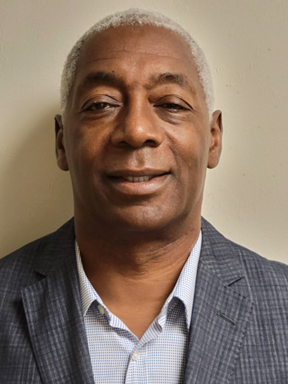
Dr. Clarence Huff has over 35 years experience in planning, research, management, engineering, and development of information technology systems. He has special interest in software engineering, distance learning, networking, knowledge engineering, data warehousing/mining, and advanced database management systems on which he continuously does special research. High level professional experience includes designing, developing, managing, implementing, installing, training, and testing software and hardware in the area of command, control, communications, and intelligence.
Dr. Muhammad Hussain has 14 years of experience in algorithm development, modeling, coding, ML, and statistical and mathematical analysis in electrical and computer engineering fields. He has extensively worked and contributed in wireless telecommunications standards and protocols and has worked directly in the radio network optimization department of a carrier. He has an MS and PhD in Electrical Engineering from the City College of New York, and joined Noblis in 2017.
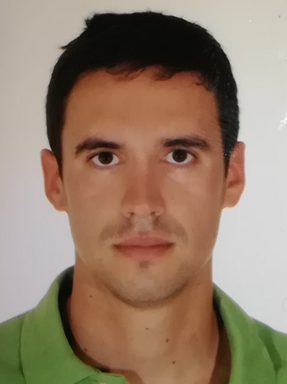 Christos Iliopoulos is an Οfficer of the Hellenic Air Force. He graduated as Εlectronics Εngineer and was further trained in the fields of aircraft avionics, telecommunications, radio and networks. He recently received his MSc degree from the School of Science and Technology in the field of Pervasive and Mobile Computing Systems at the Hellenic Open University, Greece. His MSc dissertation focused on the study of communication technologies for natural disasters and emergencies. Mr. Iliopoulos has contributed to the IEEE Public Safety Technologies Task Force (PSTTF) and in particular to the "White Paper on Gaps and Opportunities in Public Safety Technology".
Christos Iliopoulos is an Οfficer of the Hellenic Air Force. He graduated as Εlectronics Εngineer and was further trained in the fields of aircraft avionics, telecommunications, radio and networks. He recently received his MSc degree from the School of Science and Technology in the field of Pervasive and Mobile Computing Systems at the Hellenic Open University, Greece. His MSc dissertation focused on the study of communication technologies for natural disasters and emergencies. Mr. Iliopoulos has contributed to the IEEE Public Safety Technologies Task Force (PSTTF) and in particular to the "White Paper on Gaps and Opportunities in Public Safety Technology".
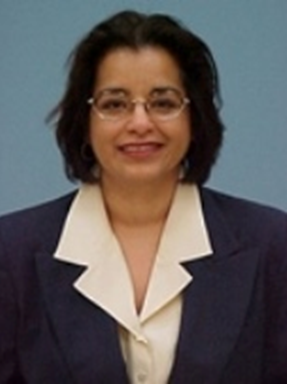 Navin Jaffer leads the systems engineering group in the Cybersecurity and Infrastructure Security Agency’s Emergency Communications Division. Since joining DHS in 2008, Ms. Jaffer has worked extensively with commercial communications service providers on Next Generation Networks Priority Services for national security events, emergency preparedness and public safety nationwide.
Navin Jaffer leads the systems engineering group in the Cybersecurity and Infrastructure Security Agency’s Emergency Communications Division. Since joining DHS in 2008, Ms. Jaffer has worked extensively with commercial communications service providers on Next Generation Networks Priority Services for national security events, emergency preparedness and public safety nationwide.
Overall, she has over 35 years of experience as a design engineer, holds two patents in the United States, and has broad program and project management experience. She holds an MS in Cybersecurity Systems and Operations from the Naval Post Graduate School, an MS in Electrical Engineering from North Carolina State University, an MBA from the University of Chicago and an SB in Mechanical Engineering from the Massachusetts Institute of Technology.
 Mike Jensen co-started Canada’s first non-profit internet service provider - The Web - in the mid 1980s, and helped found the Association for Progressive Communications (APC) in 1990. Mike is a nomadic South African who provides expertise in digital infrastructure technology and policy, having advised NGOs, governments and private companies on the deployment of internet infrastructure in over 45 countries in the last 30 years. In recognition of his contributions to the development of the Internet, he was inducted into the Internet Society's Internet Hall of Fame (IHOF) in 2017.
Mike Jensen co-started Canada’s first non-profit internet service provider - The Web - in the mid 1980s, and helped found the Association for Progressive Communications (APC) in 1990. Mike is a nomadic South African who provides expertise in digital infrastructure technology and policy, having advised NGOs, governments and private companies on the deployment of internet infrastructure in over 45 countries in the last 30 years. In recognition of his contributions to the development of the Internet, he was inducted into the Internet Society's Internet Hall of Fame (IHOF) in 2017.
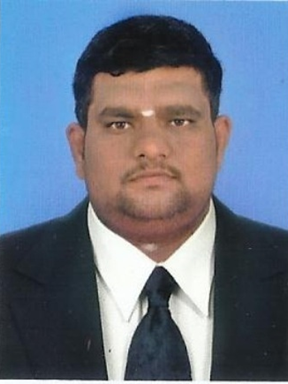 S. Kannadhasan is working as an Assistant Professor in the department of Electronics and Communication Engineering in Cheran College of Engineering, karur, Tamilnadu, India. He is currently doing research in the field of Smart Antenna for Anna University. He is ten years of teaching and research experience. He obtained his B.E in ECE from Sethu Institute of Technology, Kariapatti in 2009 and M.E in Communication Systems from Velammal College of Engineering and Technology, Madurai in 2013. He obtained his M.B.A in Human Resources Management from Tamilnadu Open University, Chennai. He obtained his PGVLSI in Post Graduate diploma in VLSI design from Annamalai University, Chidambaram in 2011 and PGDCA in Post Graduate diploma in Computer Applications from Tamil University in 2014. He obtained his PGDRD in Post Graduate diploma in Rural Development from Indira Gandhi National Open University in 2016. He has published around 18 papers in the reputed indexed international journals and more than 125 papers presented/published in national, international journal and conferences. Besides he has contributed a book chapter also. He also serves as a board member, reviewer, speaker, session chair, advisory and technical committee of various colleges and conferences. He is also to attend the various workshop, seminar, conferences, faculty development programme, STTP and Online courses. His areas of interest are Smart Antennas, Digital Signal Processing, Wireless Communication, Wireless Networks, Embedded System, Network Security, Optical Communication, Microwave Antennas, Electromagnetic Compatability and Interference, Wireless Sensor Networks, Digital Image Processing, Satellite Communication, Cognitive Radio Design and Soft Computing techniques. He is Member of IEEE, ISTE, IEI, IETE, CSI, IAENG, SEEE, IEAE, INSC, IARDO, ISRPM, IACSIT, ICSES, SPG, SDIWC, IJSPR and EAI Community
S. Kannadhasan is working as an Assistant Professor in the department of Electronics and Communication Engineering in Cheran College of Engineering, karur, Tamilnadu, India. He is currently doing research in the field of Smart Antenna for Anna University. He is ten years of teaching and research experience. He obtained his B.E in ECE from Sethu Institute of Technology, Kariapatti in 2009 and M.E in Communication Systems from Velammal College of Engineering and Technology, Madurai in 2013. He obtained his M.B.A in Human Resources Management from Tamilnadu Open University, Chennai. He obtained his PGVLSI in Post Graduate diploma in VLSI design from Annamalai University, Chidambaram in 2011 and PGDCA in Post Graduate diploma in Computer Applications from Tamil University in 2014. He obtained his PGDRD in Post Graduate diploma in Rural Development from Indira Gandhi National Open University in 2016. He has published around 18 papers in the reputed indexed international journals and more than 125 papers presented/published in national, international journal and conferences. Besides he has contributed a book chapter also. He also serves as a board member, reviewer, speaker, session chair, advisory and technical committee of various colleges and conferences. He is also to attend the various workshop, seminar, conferences, faculty development programme, STTP and Online courses. His areas of interest are Smart Antennas, Digital Signal Processing, Wireless Communication, Wireless Networks, Embedded System, Network Security, Optical Communication, Microwave Antennas, Electromagnetic Compatability and Interference, Wireless Sensor Networks, Digital Image Processing, Satellite Communication, Cognitive Radio Design and Soft Computing techniques. He is Member of IEEE, ISTE, IEI, IETE, CSI, IAENG, SEEE, IEAE, INSC, IARDO, ISRPM, IACSIT, ICSES, SPG, SDIWC, IJSPR and EAI Community
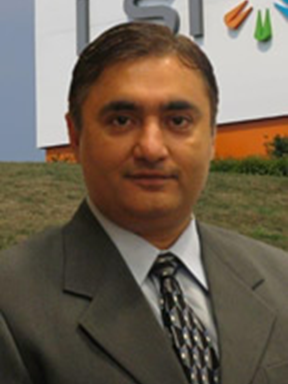 Deepak Kataria is founder and CEO of IPJunction, an early stage startup focused on developing products and solutions for next generation content delivery networks. His other roles have included serving as director of systems solutions consulting for the Networking and Telecom practice at HCL America. As a noted industry expert, he is the holder of four U.S. patents in networking, with six others in pending status. His work has been published in numerous publications including trade magazines and journals, and presented at numerous industry conferences. Currently he serves as Industry Co-Chair for the IEEE ANTS and ICCBN conferences. He also serves on the Industrial Advisory Board for an NSF-funded project, NSF 0531507, at Texas A&M University on wireless sensor networks along with TI and Cypress Semiconductor. He holds a B.S. in electronics and communications engineering, and M.S. and Ph.D. degrees in electrical engineering from Rutgers University. Earlier in his career, he spent more than 17 years serving in various capacities as a network consultant, systems engineer, systems architect, systems applications manager, and systems integration manager during his tenure with AT&T Bell Labs, Lucent Technologies, Agere Systems, and LSI.
Deepak Kataria is founder and CEO of IPJunction, an early stage startup focused on developing products and solutions for next generation content delivery networks. His other roles have included serving as director of systems solutions consulting for the Networking and Telecom practice at HCL America. As a noted industry expert, he is the holder of four U.S. patents in networking, with six others in pending status. His work has been published in numerous publications including trade magazines and journals, and presented at numerous industry conferences. Currently he serves as Industry Co-Chair for the IEEE ANTS and ICCBN conferences. He also serves on the Industrial Advisory Board for an NSF-funded project, NSF 0531507, at Texas A&M University on wireless sensor networks along with TI and Cypress Semiconductor. He holds a B.S. in electronics and communications engineering, and M.S. and Ph.D. degrees in electrical engineering from Rutgers University. Earlier in his career, he spent more than 17 years serving in various capacities as a network consultant, systems engineer, systems architect, systems applications manager, and systems integration manager during his tenure with AT&T Bell Labs, Lucent Technologies, Agere Systems, and LSI.
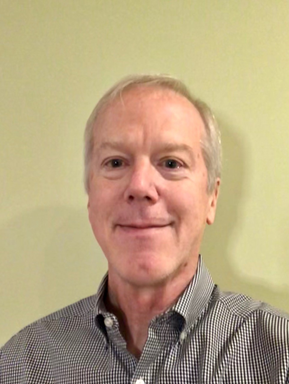 Kelly Krick is Director of Business Development for Mission Critical Networks in North America. He partners with various teams to execute solutions for Public Safety, Peacekeeping and Defense, Utilities and Rail.
Kelly Krick is Director of Business Development for Mission Critical Networks in North America. He partners with various teams to execute solutions for Public Safety, Peacekeeping and Defense, Utilities and Rail.
Mr. Krick has over 40 years of wide-ranging experience from wireline and wireless technologies and from design to operation roles. He has implemented many forms of telecom transformation – digital, wireless (2G through 5G), virtualized, and now cloudified.
A Senior member of IEEE, Kelly is a former Chairman of IEEE ComSoc's Communications Quality and Reliability Technical Committee and currently serves on the Board of Advisors.
Mr. Krick’s career began with Central Telephone Company in the US and subsequently included roles in Northern Telecom (Nortel) and Ericsson

Dr. Ashish Kundu is a distinguished scientist, a leader in the area of Security, Privacy, Compliance and AI Ethics, and a distinguished speaker. He is currently working as a Head of Cybersecurity Research at Cisco Research. He has led security and compliance of self-driving cars, tele-operated driving, across all the stacks. He has also led the security and compliance of cloud-based healthcare, and cloud-based AI-driven education platforms. He has led cybersecurity of Nuro as its Head of Cybersecurity. Dr. Kundu also worked as a Master Inventor and Research Staff Member at IBM T J Watson Research Center. His research has led to more than 160 patents filed with more than 130 patents granted, and more than 40 research papers. Dr. Kundu received his Ph.D. in Cybersecurity from Purdue University. His work has been recognized with several awards and honors. Dr. Kundu has been honored with the prestigious Master Inventor recognition multiple times by IBM Research, New York. He has been privileged to be recognized as an ACM Distinguished Member, and in the past, he has been named as an ACM Distinguished Speaker. Dr. Kundu’s doctoral research at Purdue University received the prestigious CERIAS Diamond Award for his outstanding contributions to cybersecurity.
 Eapen Kuruvilla has a career spanning 20+ years in 5G, LTE and UMTS development and delivery, both with service providers and equipment vendors. He has domain expertise in 5G, LTE RAN, C-V2X, VoLTE, MEC, Machine Learning, DevOps, and AWS. Eapen is skilled in solution architecture, real-time software development, cloud integration, and test automation. He has an MS in Computer Science from the Stevens Institute of Technology. Eapen joined Noblis in May 2020.
Eapen Kuruvilla has a career spanning 20+ years in 5G, LTE and UMTS development and delivery, both with service providers and equipment vendors. He has domain expertise in 5G, LTE RAN, C-V2X, VoLTE, MEC, Machine Learning, DevOps, and AWS. Eapen is skilled in solution architecture, real-time software development, cloud integration, and test automation. He has an MS in Computer Science from the Stevens Institute of Technology. Eapen joined Noblis in May 2020.
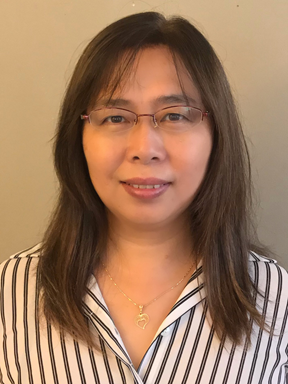 Chunmei Liu received her Ph.D. degree in Computer Systems from the Massachusetts Institute of Technology (MIT) in 2005. She has been working in the areas of wireless communications and networking since then. She is currently a researcher with the Wireless Networks Division, National Institute of Standards and Technology (NIST). Her research interests include public safety communications in cellular networks and machine learning.
Chunmei Liu received her Ph.D. degree in Computer Systems from the Massachusetts Institute of Technology (MIT) in 2005. She has been working in the areas of wireless communications and networking since then. She is currently a researcher with the Wireless Networks Division, National Institute of Standards and Technology (NIST). Her research interests include public safety communications in cellular networks and machine learning.
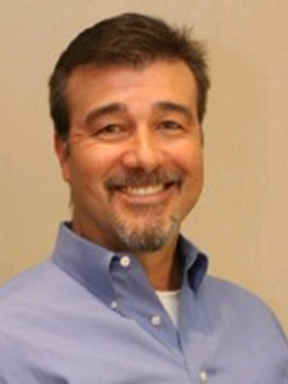 John Macias is a Distinguished Engineer – Systems Architecture at Verizon. He architects commercial and private 5G networks and drives innovation in the radio access network deployment space. His contributions to novel designs in the civilian and non-civilian space have led to some industry firsts, including 5G specific applications within the VA Healthcare System. Macias is a primary investigator of new technologies within the Verizon Technology and Product Development community, focusing on DoD and Public Safety. He is currently conducting research in O-RAN and the implications for commercial and private networks. Macias has been in the wireless industry for more than 25 years and holds a B.S. in Electrical Engineering from Stanford University.
John Macias is a Distinguished Engineer – Systems Architecture at Verizon. He architects commercial and private 5G networks and drives innovation in the radio access network deployment space. His contributions to novel designs in the civilian and non-civilian space have led to some industry firsts, including 5G specific applications within the VA Healthcare System. Macias is a primary investigator of new technologies within the Verizon Technology and Product Development community, focusing on DoD and Public Safety. He is currently conducting research in O-RAN and the implications for commercial and private networks. Macias has been in the wireless industry for more than 25 years and holds a B.S. in Electrical Engineering from Stanford University.
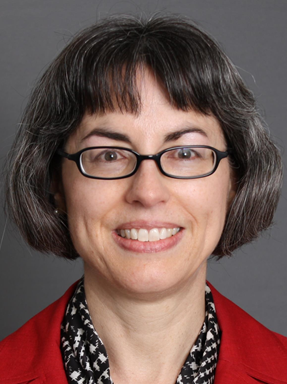
Dr. Denise Masi has over 25 years of modeling, analysis, and engineering experience, and leads teams at Noblis supporting federal government clients in modeling and simulation of their wired and wireless critical communications. Her research interests include queueing theory and simulation applied to telecommunications networks. She has a BS in Industrial Engineering from Texas A&M University, an MS in Operations Research from Purdue University, and a PhD in Information Technology / Operations Research from George Mason University.
 Dr. Apurva N. Mody is a world recognized expert on Spectrum Sharing and Spectrum Exploitation Technologies. Dr. Mody received his Ph. D. in Electrical Engineering from Georgia Institute of Technology in December 2004. In the recent past, Dr. Mody has served as the Vice Chair and Chairman of the National Spectrum Consortium (NSC). As a Member of the Executive Committee, Dr. Mody is acting as the Working Groups Chairman to create interoperable specifications, recommended practices, white papers and study reports in the area of Spectrum and 5G.
Dr. Apurva N. Mody is a world recognized expert on Spectrum Sharing and Spectrum Exploitation Technologies. Dr. Mody received his Ph. D. in Electrical Engineering from Georgia Institute of Technology in December 2004. In the recent past, Dr. Mody has served as the Vice Chair and Chairman of the National Spectrum Consortium (NSC). As a Member of the Executive Committee, Dr. Mody is acting as the Working Groups Chairman to create interoperable specifications, recommended practices, white papers and study reports in the area of Spectrum and 5G.
Dr. Mody has more than 20 years of experience in Research and Development (R&D) of wireless communications, radars, Electronic Warfare (EW) and systems related to Spectrum Dominance Awareness and Sharing. Dr. Mody has worked on countless Department of Defense (DoD) Programs as a Principal Investigator, Program Manager and as a Capture Team Lead. These programs have resulted in development of potential solutions for radar and communications spectrum sharing, development of spectrum sensing chip, anti-jam wireless communications solutions, co-existence between communications and electronic warfare systems, as well as implementation of low-cost techniques to make any radio cognitive. Dr. Mody was one of the first researchers to talk about the effective use of not only the White Space, but also the Gray Space.
Dr. Mody recently founded AiRANACULUS, which is at the forefront in Intelligent RF and Networking Solutions for applications ranging from Space to Smart Cities. The company has assembled the world’s leading experts to provide algorithms, reference architectures and products in signal processing, cross-layer analysis, cybersecurity and networking to create spectrum aware technologies capable of re-configuring radio and sensor systems for optimal performance in congested and contested environments. AiRANACULUS is working on wide variety of Projects including creation of Cognitive Control Plane and Network Slicing for NASA’ s Moon Mission, 5G Dynamic Spectrum Sharing at Hill Air Force Base, Army Waveform Agnostic learning-enhanced Decision Engine and Navy Program to add Multi-User Detection to Advanced Tactical Networking Waveform.
Dr. Mody is also the founding Chairman of the WhiteSpace Alliance™ (WSA) as well as the Chairman Emeritus of IEEE 802.22 Working Group (WG) for Wireless Regional Area Networks (WRANs). Dr. Mody has been recently awarded the IEEE SA Medal for creating spectrum sharing technologies to reduce the global problem of Digital Divide. Under his leadership, the IEEE 802.22 WG is the recipient of the IEEE Emerging Technology Award. Dr. Mody, also led the IEEE 802.22.3 / 802.15.22.3 Task Group on Spectrum Characterization and Occupancy Sensing. Dr. Mody has access to regulators and Government officials all over the world. He has worked with many Government organizations including United States DoD, NTIA, FCC, Department of State, USAID, United Nations, International Telecommunications Union as well as Ministries of many countries around the world.
Dr. Mody is a Senior Member of the IEEE, he was President’s Fellow while at Georgia Tech, he is a member of IEEE Eta Kappa Nu and Tau Beta Pi honor societies. His research work has been published in three book chapters and more than 50 Conference and Journal Papers. Dr. Mody has been awarded more than 25 patents.
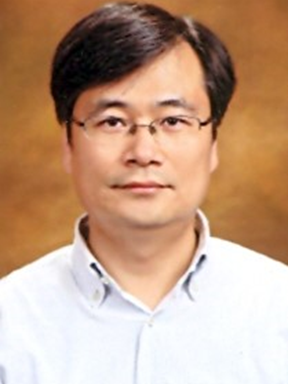
Hichan Moon is a professor in the Department of Electronic Engineering, Hanyang University, Seoul, Korea. He received his B.S. (Summa Cum Laude) and M.S. degrees in electronics engineering from Seoul National University, Seoul, Korea and his Ph.D. degree in electrical engineering from Stanford University, Stanford, CA, USA. Before joining Hanyang University, he worked at Samsung Electronics Co., Korea. At Samsung, he designed mobile station modems for cdma2000, W-CDMA, and LTE. He also worked for 3GPP standardization. He is the project initiative of HELPS and a founder of Infoseize Systems. He is the chair of Ad Hoc Committee on Mission Critical Communications, IEEE Vehicular Technology Society.
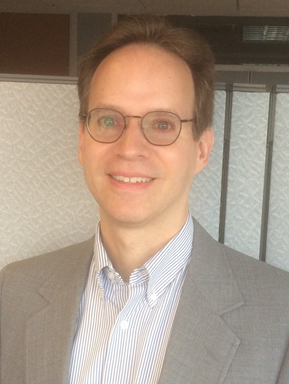 Nicholas Oros is the Deputy Chief of the Policy and Rules Division, Office of Engineering and Technology, at the Federal Communications Commission. OET is the Commission’s primary resource for engineering expertise and provides technical support to the Chairwoman, Commissioners, and FCC Bureaus and Offices. Since joining the Commission in 2005, Mr. Oros has been involved in various rulemaking proceedings including Spectrum Frontiers, which made mmW band spectrum available for 5G Services; Spectrum Horizons, which focuses on spectrum above 95 GHz; and the 6 GHz band proceeding that made 1200 megahertz of spectrum available for unlicensed use.
Nicholas Oros is the Deputy Chief of the Policy and Rules Division, Office of Engineering and Technology, at the Federal Communications Commission. OET is the Commission’s primary resource for engineering expertise and provides technical support to the Chairwoman, Commissioners, and FCC Bureaus and Offices. Since joining the Commission in 2005, Mr. Oros has been involved in various rulemaking proceedings including Spectrum Frontiers, which made mmW band spectrum available for 5G Services; Spectrum Horizons, which focuses on spectrum above 95 GHz; and the 6 GHz band proceeding that made 1200 megahertz of spectrum available for unlicensed use.
Prior to joining the Commission, Mr. Oros was an engineer at Motorola for eight years where he focused on the computer simulation of digital communication systems and radio based position determination. He is a graduate of the University of Illinois College of Law and has also earned a Master’s Degree in Electrical Engineering from Purdue University and a Bachelor’s Degree in Electrical Engineering from the University of Missouri at Rolla.
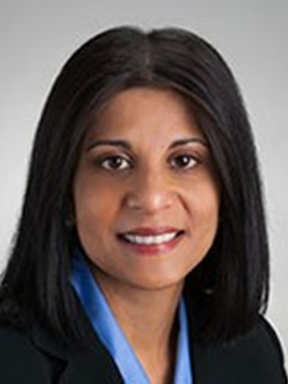
Lizy Paul is the Elected Chair of the National Spectrum Consortium and Director, 5G.MIL Programs for the Lockheed Martin Corporation. At Lockheed Martin, Lizy leads the strategy, planning, and execution of the enterprise wide 5G.MIL™ IR&D portfolio. Prior to Lockheed Martin, she was the Director of Technical Strategy for Defense Communications and Networking Solutions at Raytheon Technologies. She also has 10 years of experience in the Commercial Cellular Industry. She holds 16 U.S. patents and has a Masters in Electrical Engineering from Johns Hopkins University and an Executive MBA from the University of Iowa.
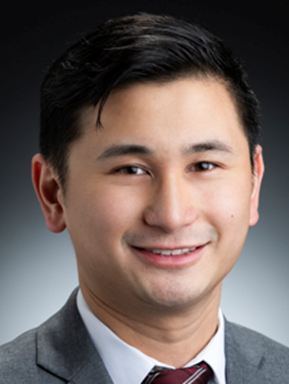 Ryan Pepito is a member of the Associate Professional Staff in the Mission Critical Communications Group (QKT) at The Johns Hopkins University Applied Physics Lab (JHU/APL). He has professional experience in 5G research and development, specifically, internal 5G testbed creation and research leveraging open-source technologies. He has experience with the NSF PAWR testbeds, 3GPP specifications, 5G dual connectivity, research in multi-access edge computing (MEC) and MEC security. He has his Bachelor of Science degree in Electrical & Computer Engineering from Drexel University and is currently pursuing his Master of Science degree in Electrical Engineering from Johns Hopkins University.
Ryan Pepito is a member of the Associate Professional Staff in the Mission Critical Communications Group (QKT) at The Johns Hopkins University Applied Physics Lab (JHU/APL). He has professional experience in 5G research and development, specifically, internal 5G testbed creation and research leveraging open-source technologies. He has experience with the NSF PAWR testbeds, 3GPP specifications, 5G dual connectivity, research in multi-access edge computing (MEC) and MEC security. He has his Bachelor of Science degree in Electrical & Computer Engineering from Drexel University and is currently pursuing his Master of Science degree in Electrical Engineering from Johns Hopkins University.
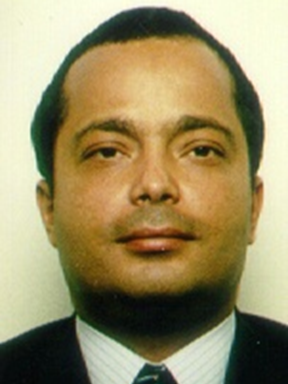 Dr. Jorge Pereira, obtained the Engineering and M.Sc. degrees in Electrical and Computer Engineering from Instituto Superior Técnico (IST), Lisbon, Portugal in 1983 and 1987, respectively, and received the Ph.D. in Electrical Engineering-Systems from the University of Southern California (USC), Los Angeles, in 1993.Between 1983 and 1988, he taught in the Department of Electrical and Computer Engineering of IST as Full Lecturer in the areas of Electrotechnics and Electrical Measurements, Applied Electronics and Telecommunication Systems, and became Assistant Professor in 1994.
Dr. Jorge Pereira, obtained the Engineering and M.Sc. degrees in Electrical and Computer Engineering from Instituto Superior Técnico (IST), Lisbon, Portugal in 1983 and 1987, respectively, and received the Ph.D. in Electrical Engineering-Systems from the University of Southern California (USC), Los Angeles, in 1993.Between 1983 and 1988, he taught in the Department of Electrical and Computer Engineering of IST as Full Lecturer in the areas of Electrotechnics and Electrical Measurements, Applied Electronics and Telecommunication Systems, and became Assistant Professor in 1994.
From 1988 to 1990, he worked at LinCom Corp., Los Angeles, in a NASA project on space-to-space communications, and on synchronization issues. From 1991 to 1993, he worked for Caltrans (California Department of Transportation) and PATH (Partners for Advanced Transportation Technology) on Intelligent Vehicle-Highway Systems (IVHS)/Intelligent Transportation Systems (ITS). From 1993 to 1996, at GTE Laboratories Inc., Waltham, MA, he was responsible for Communication Analysis and Simulation in the Federal Highway Administration National IVHS Architecture study and represented GTE at the Telecommunications Industry Association (TIA) IVHS Section, and in the High Speed Data Systems workgroup of the CDMA Development Group (CDG). He was also involved in the early work on e911.
He has been with the European Commission since September 1996, initially as Scientific Officer, becoming Principal Scientific Officer in 2005. He has been dealing with ICT, covering a broad variety of areas, with a focus on networking, devices, applications and services, testing and validation, as well as deployment. He is, since 2016, in the area of Future Connectivity Systems, focusing on 5G and beyond, where he is responsible for the areas of Advanced Spectrum Management; optical-wireless convergence; Connected and Automated Mobility (CAM); and Public Protection and Disaster Relief (PPDR) / Emergency and Crisis Management.
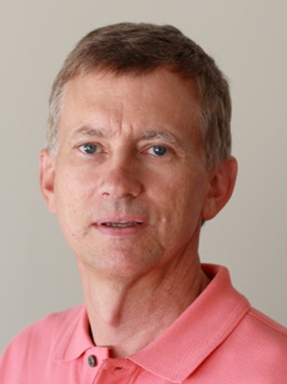 Larry Peterson is a long-time network systems researcher, who now splits his time between Systems Approach LLC (where he authors books and other educational material), the Open Networking Foundation (where he contributes to open source edge computing platforms), and Princeton University (where he is the Robert E. Kahn Professor of Computer Science, Emeritus). His research focuses on the design, implementation, and deployment of Internet-scale distributed systems, and includes the widely used PlanetLab and MeasurementLab platforms.
Larry Peterson is a long-time network systems researcher, who now splits his time between Systems Approach LLC (where he authors books and other educational material), the Open Networking Foundation (where he contributes to open source edge computing platforms), and Princeton University (where he is the Robert E. Kahn Professor of Computer Science, Emeritus). His research focuses on the design, implementation, and deployment of Internet-scale distributed systems, and includes the widely used PlanetLab and MeasurementLab platforms.
Peterson is a member of the National Academy of Engineering, a Fellow of the ACM and the IEEE, the 2010 recipient of the IEEE Kobayashi Computer and Communication Award, and the 2013 recipient of the ACM SIGCOMM Lifetime Contributions Award. He received his Ph.D. degree from Purdue University in 1985.
 Ari Pouttu has scientific and engineering experience as a researcher, project manager and research manager in various domains of ICT development. The projects under his command have resulted in waveforms and system designs for military radio communication, radar systems, embedded device networks, future wireless radio communications including cellular systems, cognitive networks and navigation applications.
Ari Pouttu has scientific and engineering experience as a researcher, project manager and research manager in various domains of ICT development. The projects under his command have resulted in waveforms and system designs for military radio communication, radar systems, embedded device networks, future wireless radio communications including cellular systems, cognitive networks and navigation applications.
He has published more than 70 conference or journal papers in the field of wireless communications and he holds two patents. He was the Director of Centre for Wireless Communications in the University of Oulu from 2006 to 2012. Currently he is heading as a professor a research group targeting dependable wireless solutions for business verticals such as energy, industry, health and automotive including solutions for 5G. He is the principal investigator of 5G test network (5GTN) experimental research, co-PI of H2020 SLICES-SC, 5G!Drones, Inspire5Gplus and 5G-ENHANCE projects and is acting as vice-director of the national 6G Flagship Programme targeting 6G solutions.
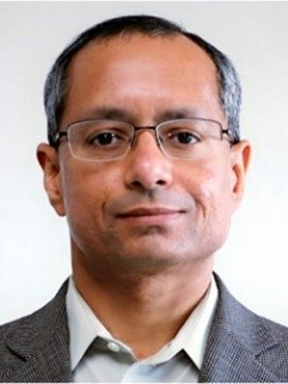 Rajat Prakash is with the Wireless R&D group at Qualcomm. His current work focuses on 5G-enabled virtualized RAN and industrial IoT technologies, and on the evolution of 5G towards 6G. He has previously worked on small cells, self-organizing networks, neutral host, VoLTE and VoWiFi technologies. Rajat has participated in several industry bodies, including 3GPP, O-RAN Alliance, CBRS Alliance, Multefire Alliance, Small Cell Forum, 5G ACIA, IEEE and 3GPP2. Rajat obtained his PhD from the University of Illinois at Urbana-Champaign, MS from Cornell University and B.Tech from the Indian Institute of Technology, Kanpur, all in Electrical Engineering.
Rajat Prakash is with the Wireless R&D group at Qualcomm. His current work focuses on 5G-enabled virtualized RAN and industrial IoT technologies, and on the evolution of 5G towards 6G. He has previously worked on small cells, self-organizing networks, neutral host, VoLTE and VoWiFi technologies. Rajat has participated in several industry bodies, including 3GPP, O-RAN Alliance, CBRS Alliance, Multefire Alliance, Small Cell Forum, 5G ACIA, IEEE and 3GPP2. Rajat obtained his PhD from the University of Illinois at Urbana-Champaign, MS from Cornell University and B.Tech from the Indian Institute of Technology, Kanpur, all in Electrical Engineering.
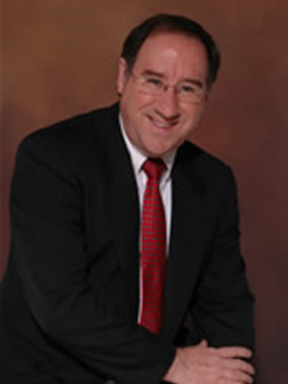 Grayson Randall serves as Vice President & Chief Technology Officer at Ascot Technologies, Inc., an award winning software company specializing in data collection and data mining technologies. A former IBMer with 13 patents, he leads all the development and support efforts for Ascot Technologies, including new product development and deployment. He has over 30 years of experience in systems design and architecture and has experience as a team leader for international scale projects.
Grayson Randall serves as Vice President & Chief Technology Officer at Ascot Technologies, Inc., an award winning software company specializing in data collection and data mining technologies. A former IBMer with 13 patents, he leads all the development and support efforts for Ascot Technologies, including new product development and deployment. He has over 30 years of experience in systems design and architecture and has experience as a team leader for international scale projects.
Mr. Randall is a founding member of the IEEE MOVE team and is currently the Operations Lead for MOVE. Grayson is responsible for 2 Communication/Command Center trucks that have deployed 24 times in the last 5 years to disasters in the United States. He is also known in the world of robotics for his leadership of the Insight Racing DARPA Grand Challenge team which secured final and semi-final positions in the highly competitive autonomous robotic vehicle races. He also created the IEEE KEN humanoid robot project that interacted with volunteers from 10 years old to 90 years old to create a robot that could have a natural language discussion with people.
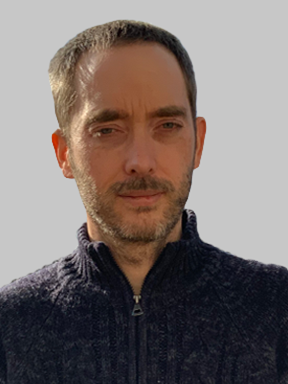 Richard Rouil received his Ph.D. degree in computer science in 2009 from Telecom Bretagne, France, that focused on mobility in heterogeneous networks. He is currently the leader of the Wireless Systems Innovation and Performance Group in the Wireless Networks Division at the National Institute of Standards and Technology (NIST). His research focuses on the performance evaluation of wireless technologies, such as Long Term Evolution (LTE) and New Radio (NR) to support the development, analysis, and deployment of networks used by public safety. His main interests include protocol modeling and simulation of communication networks.
Richard Rouil received his Ph.D. degree in computer science in 2009 from Telecom Bretagne, France, that focused on mobility in heterogeneous networks. He is currently the leader of the Wireless Systems Innovation and Performance Group in the Wireless Networks Division at the National Institute of Standards and Technology (NIST). His research focuses on the performance evaluation of wireless technologies, such as Long Term Evolution (LTE) and New Radio (NR) to support the development, analysis, and deployment of networks used by public safety. His main interests include protocol modeling and simulation of communication networks.
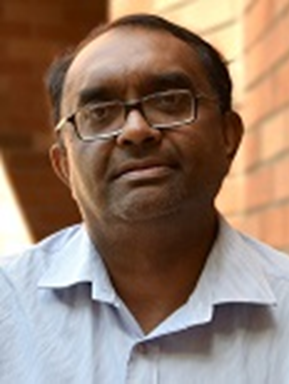 Dr. Sumit Roy is Innovation Lead at the U.S. Department of Defense. He received the B. Tech. degree from the Indian Institute of Technology (Kanpur) in 1983, and the M. S. and Ph. D. degrees from the University of California (Santa Barbara), all in Electrical & Comp. Engineering in 1985 and 1988 respectively, as well as an M. A. in Statistics and Applied Probability in 1988.
Dr. Sumit Roy is Innovation Lead at the U.S. Department of Defense. He received the B. Tech. degree from the Indian Institute of Technology (Kanpur) in 1983, and the M. S. and Ph. D. degrees from the University of California (Santa Barbara), all in Electrical & Comp. Engineering in 1985 and 1988 respectively, as well as an M. A. in Statistics and Applied Probability in 1988.
He served as Integrated Systems Professor (2014-19) of Electrical & Computer Engineering, Univ. of Washington-Seattle where his research and technology transition interests include analysis/design of wireless communication and sensor network systems with an emphasis on 5G & beyond standards, multi-standard inter-networking and spectrum coexistence using software-defined networks. He spent 2001-03 at Intel Wireless Technology Lab as a Senior Researcher engaged in systems architecture and standards development for ultra-wideband systems (Wireless PANs) and next generation high-speed wireless LANs. He has active been in IEEE Communications Society in various roles (journal editor and Distinguished Lecturer) and was elevated to IEEE Fellow (2007) for “contributions to multi-user communications theory and cross-layer design of wireless networking standards”. He currently serves as Program Lead for Innovate Beyond 5G for OUSD R&E Beyond 5G initiative
 Richard Russell, Global Head of Sales - Mobility Engine, at Radisys, partners with Fortune 100 companies and disruptive start-ups alike to deploy disaggregated 5G, CBRS, and ORAN solutions. He has over 25 years’ experience leading wireless technology teams in Europe, UK, and North America. Thanks to a career extending yoga practice, Richard is a three-time world ultimate frisbee champion (Team USA). He loves outdoor family-oriented activities such as: skiing, boating, tennis, and cheering for his alma mater, the Georgia Bulldogs.
Richard Russell, Global Head of Sales - Mobility Engine, at Radisys, partners with Fortune 100 companies and disruptive start-ups alike to deploy disaggregated 5G, CBRS, and ORAN solutions. He has over 25 years’ experience leading wireless technology teams in Europe, UK, and North America. Thanks to a career extending yoga practice, Richard is a three-time world ultimate frisbee champion (Team USA). He loves outdoor family-oriented activities such as: skiing, boating, tennis, and cheering for his alma mater, the Georgia Bulldogs.
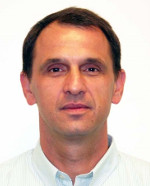 Ivan Seskar is the Chief Technologist at WINLAB, Rutgers University responsible for experimental systems and prototyping projects. He is currently the program director for the COSMOS project responsible for the New York City NSF PAWR deployment, the PI for the NSF GENI Wireless project, which resulted in campus deployments of LTE/WiMAX base stations at several US universities, and the PI for the NSF CloudLab deployment at Rutgers. He has also been the co-PI and project manager for all three phases of the NSF-supported ORBIT mid-scale testbed project at WINLAB, successfully leading technology development and operations since the testbed was released as a community resource in 2005 and for which the team received the 2008 NSF Alexander Schwarzkopf Prize for Technological Innovation. Ivan is a co-chair of the IEEE Future Networks Testbed Working Group, a Senior Member of the IEEE, a member of ACM and the co-founder and CTO of Upside Wireless Inc.
Ivan Seskar is the Chief Technologist at WINLAB, Rutgers University responsible for experimental systems and prototyping projects. He is currently the program director for the COSMOS project responsible for the New York City NSF PAWR deployment, the PI for the NSF GENI Wireless project, which resulted in campus deployments of LTE/WiMAX base stations at several US universities, and the PI for the NSF CloudLab deployment at Rutgers. He has also been the co-PI and project manager for all three phases of the NSF-supported ORBIT mid-scale testbed project at WINLAB, successfully leading technology development and operations since the testbed was released as a community resource in 2005 and for which the team received the 2008 NSF Alexander Schwarzkopf Prize for Technological Innovation. Ivan is a co-chair of the IEEE Future Networks Testbed Working Group, a Senior Member of the IEEE, a member of ACM and the co-founder and CTO of Upside Wireless Inc.
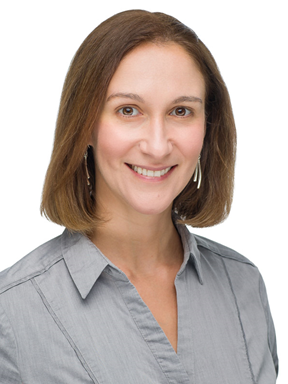 Mari Silbey is Senior Director of Partnerships and Outreach for US Ignite, and Program Director for the Platforms for Advanced Wireless Research (PAWR) program, a $100 million initiative funded by the National Science Foundation and a consortium of more than 30 wireless companies and associations. In her time at US Ignite, she has helped launch several public-private partnership programs, convened workshops with local leaders around the country, and developed best practice materials for community connectivity and data-driven initiatives.
Mari Silbey is Senior Director of Partnerships and Outreach for US Ignite, and Program Director for the Platforms for Advanced Wireless Research (PAWR) program, a $100 million initiative funded by the National Science Foundation and a consortium of more than 30 wireless companies and associations. In her time at US Ignite, she has helped launch several public-private partnership programs, convened workshops with local leaders around the country, and developed best practice materials for community connectivity and data-driven initiatives.
Mari has nearly two decades of experience in the telecom industry. Prior to joining US Ignite, she covered broadband infrastructure and telecom as a full-time journalist. She also worked in the private sector with companies including Limelight Networks and Motorola before its acquisition (and later sell-off) by Google.
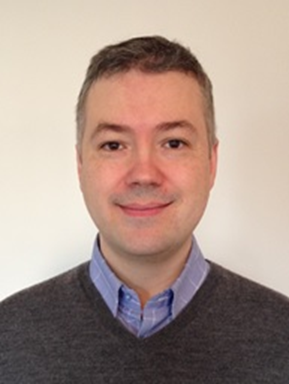 Dr. Yalin Sagduyu is the Director of Networks and Security at Intelligent Automation, a BlueHalo Company. He received his Ph.D. degree in Electrical and Computer Engineering from University of Maryland, College Park, in 2007. He has been a Visiting Research Professor in the Department of Electrical and Computer Engineering of University of Maryland, College Park. His research interests are in wireless communications, networks, security, machine learning, 5G and 6G. He chaired workshops at ACM MobiCom, ACM WiSec, IEEE CNS and IEEE ICNP, and served as a Track Chair at IEEE PIMRC, IEEE GlobalSIP and IEEE MILCOM. He received the IEEE HST 2018 Best Paper Award.
Dr. Yalin Sagduyu is the Director of Networks and Security at Intelligent Automation, a BlueHalo Company. He received his Ph.D. degree in Electrical and Computer Engineering from University of Maryland, College Park, in 2007. He has been a Visiting Research Professor in the Department of Electrical and Computer Engineering of University of Maryland, College Park. His research interests are in wireless communications, networks, security, machine learning, 5G and 6G. He chaired workshops at ACM MobiCom, ACM WiSec, IEEE CNS and IEEE ICNP, and served as a Track Chair at IEEE PIMRC, IEEE GlobalSIP and IEEE MILCOM. He received the IEEE HST 2018 Best Paper Award.
Raymond Shen, PhD directs 5G Govt Solutions at Keysight Technologies. In this role he leads Keysight's vast portfolio of end-to-end 5G test solutions for defense and government. He also leads Keysight’s Cybersecurity and spectrum monitoring solutions, managing solutions that include handheld, outdoor, and modular platforms. He has over 20 years of experience in spectrum monitoring and signal demodulation, with expertise in cellular signals. Shen has a BS EE from Caltech and a MS EE and PhD EE from Stanford University, where his PhD was in the area of neural networks.
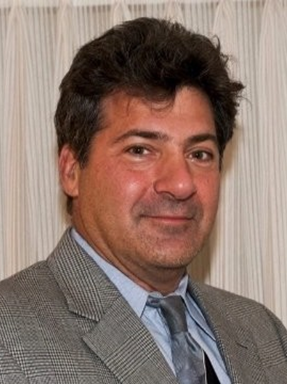 Glenn Stern works for Spirent’s Partnership organization helping to define strategic partnerships and alliances to expedite and significantly reduce risk for customer deployment of next generation network transformation and scale. Currently Glenn leads Spirent’s strategic initiatives in the US Federal Government for 5G and future networks.
Glenn Stern works for Spirent’s Partnership organization helping to define strategic partnerships and alliances to expedite and significantly reduce risk for customer deployment of next generation network transformation and scale. Currently Glenn leads Spirent’s strategic initiatives in the US Federal Government for 5G and future networks.
With over 35 years’ experience in telecommunications, Glenn has facilitated on strategy and success with and for Federal and State Government, Telecommunications Service Providers, Systems Integrators, and start-ups, helping them increase success through innovation and transformation. Glenn is a believer that strategic collaboration and partnerships is paramount to industry and customer success.
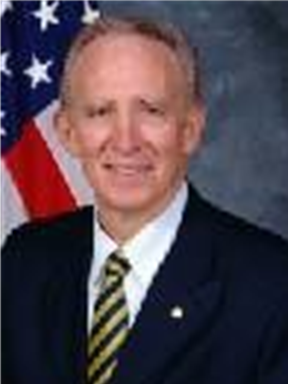 Mr. Frank Suraci serves as Senior Advisor for National Security and Emergency Preparedness (NS/EP) Communications within the Emergency Communications Division (ECD) in the Cybersecurity and Infrastructure Security Agency, DHS. In this role, Mr. Suraci directly supports the Executive Assistant Director in managing a myriad of critical emergency communications tasks and represents ECD on senior committees across Departments and Agencies in order to further advance interoperable NS/EP communications. Prior to this assignment, Mr. Suraci served for over thirty years as the Government Emergency Telecommunications Service (GETS) and Wireless Priority Service (WPS) Branch Chief. He was responsible for taking GETS and WPS from concepts to the operational services. During this time, Mr. Suraci was appointed to serve on Federal Communications Commission (FCC) Communications Security, Reliability and Interoperability Council (CSRIC) Working Groups. For the past 25 years, Mr. Suraci has represented DHS and the National Communications System (NCS) at the Alliance for Telecommunications Industry Solutions (ATIS) Next Generation Interconnection Interoperability Forum (NGIIF). Within the NGIIF, Mr. Suraci coordinated the nationwide rollouts of network priority signaling features in legacy and next generation networks supporting both GETS and WPS. He continues to enhance these NS/EP services by collaborating with telecommunications industry partners and currently supports the Wi-Fi priority access initiative in IEEE 802.11. Mr. Suraci holds a Bachelor degree in Electrical Engineering from The Catholic University of America and completed graduate work at Penn State University and George Washington University. Mr. Suraci is an active participant in professional organizations, including the IEEE and the Armed Forces Communications and Electronics Association (AFCEA) where he is a distinguished life member.
Mr. Frank Suraci serves as Senior Advisor for National Security and Emergency Preparedness (NS/EP) Communications within the Emergency Communications Division (ECD) in the Cybersecurity and Infrastructure Security Agency, DHS. In this role, Mr. Suraci directly supports the Executive Assistant Director in managing a myriad of critical emergency communications tasks and represents ECD on senior committees across Departments and Agencies in order to further advance interoperable NS/EP communications. Prior to this assignment, Mr. Suraci served for over thirty years as the Government Emergency Telecommunications Service (GETS) and Wireless Priority Service (WPS) Branch Chief. He was responsible for taking GETS and WPS from concepts to the operational services. During this time, Mr. Suraci was appointed to serve on Federal Communications Commission (FCC) Communications Security, Reliability and Interoperability Council (CSRIC) Working Groups. For the past 25 years, Mr. Suraci has represented DHS and the National Communications System (NCS) at the Alliance for Telecommunications Industry Solutions (ATIS) Next Generation Interconnection Interoperability Forum (NGIIF). Within the NGIIF, Mr. Suraci coordinated the nationwide rollouts of network priority signaling features in legacy and next generation networks supporting both GETS and WPS. He continues to enhance these NS/EP services by collaborating with telecommunications industry partners and currently supports the Wi-Fi priority access initiative in IEEE 802.11. Mr. Suraci holds a Bachelor degree in Electrical Engineering from The Catholic University of America and completed graduate work at Penn State University and George Washington University. Mr. Suraci is an active participant in professional organizations, including the IEEE and the Armed Forces Communications and Electronics Association (AFCEA) where he is a distinguished life member.
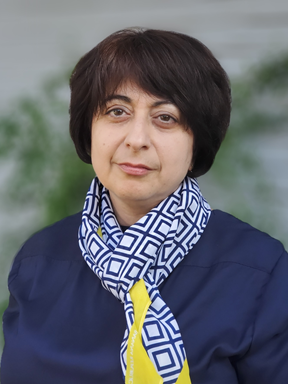 Anahit Tarkhanyan is Principal Engineer at Intel. She leads the security architecture of Intel IoT/edge portfolio. Anahit has 20 plus years of industry experience delivering the security solutions to the market. Her area of expertise covers Edge to Cloud systems security, AI/ML protection, security standards and regulation. Anahit is IEEE Senior Member and holds PhD in Distributed Computer Systems and Networks, holds several patents, and has publications in diverse security technology. She finds her inspiration from mentoring, coaching next generation of Intel’s brain power. Outside of work she enjoys travelling, arts and handcraft. She is a founder of AHMF non-profit organization with mission to stimulate creative art education for children.
Anahit Tarkhanyan is Principal Engineer at Intel. She leads the security architecture of Intel IoT/edge portfolio. Anahit has 20 plus years of industry experience delivering the security solutions to the market. Her area of expertise covers Edge to Cloud systems security, AI/ML protection, security standards and regulation. Anahit is IEEE Senior Member and holds PhD in Distributed Computer Systems and Networks, holds several patents, and has publications in diverse security technology. She finds her inspiration from mentoring, coaching next generation of Intel’s brain power. Outside of work she enjoys travelling, arts and handcraft. She is a founder of AHMF non-profit organization with mission to stimulate creative art education for children.
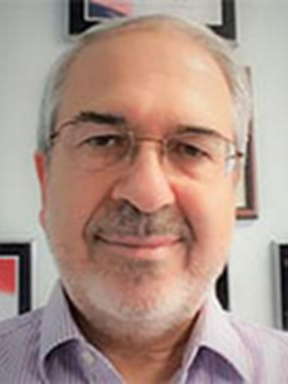 Dr. Mehmet Ulema is a professor of Computer Information Systems at Manhattan College, New York. Previously, he held management and technical positions in AT&T Bell Laboratories, Bellcore, and Daewoo Telecom. He has been on the editorial board of a number of journals. Dr. Ulema is the author of a book entitled “Fundamentals of Public Safety Networks and Critical Communications” published by Wiley in 2019. Mehmet was actively involved in standardization in ITU, TIA, ATIS, and IEEE. Currently, he is a member of IEE SA Standards Board, and he is a Co-chair of the IEEE Future Network Initiatives’ Standards Working Group. He is also a co-chair of the IEEE Public Safety Technology Task Force. Dr. Ulema also had leading roles in numerous IEEE ComSoc conferences including ICC and GLOBECOM. Dr. Ulema has received a number of awards including IEEE SA Standards Medallion award. Dr. Ulema holds MS & Ph.D. degrees in Computer Science at Polytechnic University (now the New York University Tandon School of Engineering. He also received BS & MS degrees at Istanbul Technical University.
Dr. Mehmet Ulema is a professor of Computer Information Systems at Manhattan College, New York. Previously, he held management and technical positions in AT&T Bell Laboratories, Bellcore, and Daewoo Telecom. He has been on the editorial board of a number of journals. Dr. Ulema is the author of a book entitled “Fundamentals of Public Safety Networks and Critical Communications” published by Wiley in 2019. Mehmet was actively involved in standardization in ITU, TIA, ATIS, and IEEE. Currently, he is a member of IEE SA Standards Board, and he is a Co-chair of the IEEE Future Network Initiatives’ Standards Working Group. He is also a co-chair of the IEEE Public Safety Technology Task Force. Dr. Ulema also had leading roles in numerous IEEE ComSoc conferences including ICC and GLOBECOM. Dr. Ulema has received a number of awards including IEEE SA Standards Medallion award. Dr. Ulema holds MS & Ph.D. degrees in Computer Science at Polytechnic University (now the New York University Tandon School of Engineering. He also received BS & MS degrees at Istanbul Technical University.
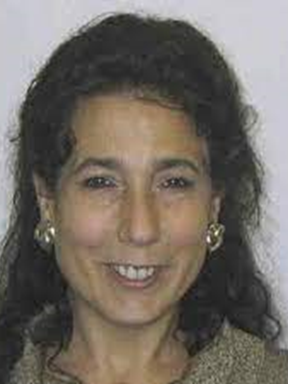 Tracy van Brakle, Principal Member of Technical Staff within AT&T's Wireless Technologies / Network Automation and Analytics group, is an active participant and contributor within several open source projects and standards development organizations. Her current area of interest is integrating Open RAN technologies with open platforms, e.g., Linux Foundation Networking “5G Super Blueprint,” using model-driven interface specifications from O-RAN, ONF, and 3GPP. Before joining AT&T, Tracy was a Senior Technologist with Goldman Sachs. She holds 14 patents in Wireless Technologies.
Tracy van Brakle, Principal Member of Technical Staff within AT&T's Wireless Technologies / Network Automation and Analytics group, is an active participant and contributor within several open source projects and standards development organizations. Her current area of interest is integrating Open RAN technologies with open platforms, e.g., Linux Foundation Networking “5G Super Blueprint,” using model-driven interface specifications from O-RAN, ONF, and 3GPP. Before joining AT&T, Tracy was a Senior Technologist with Goldman Sachs. She holds 14 patents in Wireless Technologies.
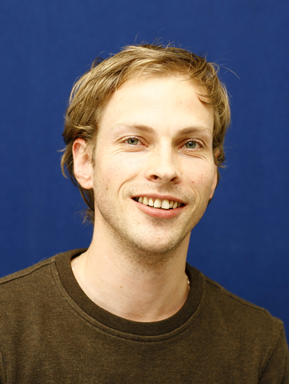 Sven van der Meer - Sven van der Meer is a lecturer, scientist, researcher, software engineer, and consultant with a Dipl.-Inform. (M.Sc., 1996) and a Dr.-Ing. (PhD, 2002) from the Berlin Institute of Technology (TUB). He worked in TUB, Fraunhofer FOKUS, Waterford Institute of Technology, and the Ericsson Network Management Lab. In 2020 Sven joined VMware, where he currently is the Lead Architect in the Distributed Edge group in the Office of the CTO. Sven helps the team to build a Multi-Cloud Service Grid combining time-sensitive service, intelligent features, and autonomic capabilities into a utility that delivers anything anywhere. This work will help to create an eco-system with partners, mainly the Open Grid Alliance (OGA). Sven led and contributed to over 20 German, Irish, and European projects. He co-authored more than 100 peer-reviewed publications and five patents, and contributed to standards (OMG, TM Forum, ISO, 3GPP, IEEE, IETF) and FOSS (namely APEX in ONAP). Sven is an active member of IEEE CNOM (TPCs and OCs for IM, NOMS, CNSM). He also supervised more than 50 M.Sc. and PhD students. Sven’s main research interest are autonomic management, automation of network operations, and recursive network architectures.
Sven van der Meer - Sven van der Meer is a lecturer, scientist, researcher, software engineer, and consultant with a Dipl.-Inform. (M.Sc., 1996) and a Dr.-Ing. (PhD, 2002) from the Berlin Institute of Technology (TUB). He worked in TUB, Fraunhofer FOKUS, Waterford Institute of Technology, and the Ericsson Network Management Lab. In 2020 Sven joined VMware, where he currently is the Lead Architect in the Distributed Edge group in the Office of the CTO. Sven helps the team to build a Multi-Cloud Service Grid combining time-sensitive service, intelligent features, and autonomic capabilities into a utility that delivers anything anywhere. This work will help to create an eco-system with partners, mainly the Open Grid Alliance (OGA). Sven led and contributed to over 20 German, Irish, and European projects. He co-authored more than 100 peer-reviewed publications and five patents, and contributed to standards (OMG, TM Forum, ISO, 3GPP, IEEE, IETF) and FOSS (namely APEX in ONAP). Sven is an active member of IEEE CNOM (TPCs and OCs for IM, NOMS, CNSM). He also supervised more than 50 M.Sc. and PhD students. Sven’s main research interest are autonomic management, automation of network operations, and recursive network architectures.
Kobus Van der Merwe is the Jay Lepreau Professor in the School of Computing and Director of the Flux Research Group at the University of Utah. He joined the University of Utah in 2012 after fourteen years at AT&T Labs - Research. He does networking systems research in a broad range of areas including network management, control and operation, mobile and wireless networking, network evolution, network security and cloud computing. He is the PI and Director of the POWDER project (Platform for Open Wireless Data-driven Experimental Research), one of the NSF-funded PAWR platforms.
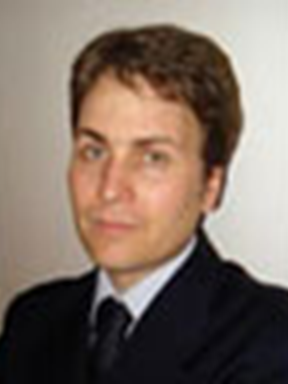 Alessandro Vizzarri received degree in Electronic Engineering from University of Bologna in 2003, Ph.D in “Telecommunication Engineering and Microelectronics” from University of Rome Tor Vergata. He is Adjunct Professor of “Radio Spectrum Management” at University of Roma Tor Vergata and Project Manager for Radiolabs Consortium. He worked for many years as Consultant Engineer and Manager for Telecom Operators, Equipment Vendors and Multinational Consultancy Companies operating in ICT market. His research interests include Wireless Networks, Radio Network Planning, Regulation and Standardization, Innovative Thinking and Business Models.
Alessandro Vizzarri received degree in Electronic Engineering from University of Bologna in 2003, Ph.D in “Telecommunication Engineering and Microelectronics” from University of Rome Tor Vergata. He is Adjunct Professor of “Radio Spectrum Management” at University of Roma Tor Vergata and Project Manager for Radiolabs Consortium. He worked for many years as Consultant Engineer and Manager for Telecom Operators, Equipment Vendors and Multinational Consultancy Companies operating in ICT market. His research interests include Wireless Networks, Radio Network Planning, Regulation and Standardization, Innovative Thinking and Business Models.
 As CTO for Nokia Federal, Steve Vogelsand is responsible for leading a technical team that curates and adapts Nokia’s broad portfolio of networking products and technology to deliver mission critical capabilities to the U.S. Government. A self-proclaimed cynic when it comes to technology trends, Steve likes to cut through industry hype and zero in on the truly innovative technologies that can be rapidly prototyped, implemented, and deployed.
As CTO for Nokia Federal, Steve Vogelsand is responsible for leading a technical team that curates and adapts Nokia’s broad portfolio of networking products and technology to deliver mission critical capabilities to the U.S. Government. A self-proclaimed cynic when it comes to technology trends, Steve likes to cut through industry hype and zero in on the truly innovative technologies that can be rapidly prototyped, implemented, and deployed.
 Dr. Jolly Wong is a technology and strategy consultant with over 30 years of experience working in public goods projects. As Chief Technology Officer at the Hong Kong Police Force (HKPF), he oversaw the formulation of policies and strategies of ICT imperatives and rollout of command and control communications systems which won him the Outstanding Contribution to TETRA (Critical Communications) Award in 2008.
Dr. Jolly Wong is a technology and strategy consultant with over 30 years of experience working in public goods projects. As Chief Technology Officer at the Hong Kong Police Force (HKPF), he oversaw the formulation of policies and strategies of ICT imperatives and rollout of command and control communications systems which won him the Outstanding Contribution to TETRA (Critical Communications) Award in 2008.
He created the Finance-Operate-Own-Share (FOOS) business model, which successfully applied public and private partnerships to resolve major technological challenges in the HKPF. The model and its application have won awards like the Ken Goulding Prize for Professional Excellence 2015 and parts of the model has been replicated by organizations all over the world.
Between 2015 and 2017 Dr. Wong was a member of the Advisory Committee on Innovation and Technology, the body that wrote the ‘Smart City’ blueprint for innovation and technology development for the HKSAR Government. In January 2021 he became the Senior Adviser for Hongkong Electric Company Limited (HEC) on technology policy and strategy related to innovation and cybersecurity. HEC is a utility providing a safe and highly reliable (at rating over 99.9999%) electricity supply to over 580,000 households on Hong Kong and Lamma Islands.
Dr. Wong is deeply involved with the Institution of Engineering and Technology (IET) and has served as its Vice President, Trustee, Council Chairman and Hong Kong Branch Chairman. He was the former Hong Kong Chapter Chair of the IEEE Engineering Management Society. He mentors STEM students as a Visiting Professor for Shanghai University and Beijing University of Posts and Telecommunications, and is also a Policy Fellow for the Centre for Science and Policy (CSaP) at University of Cambridge.
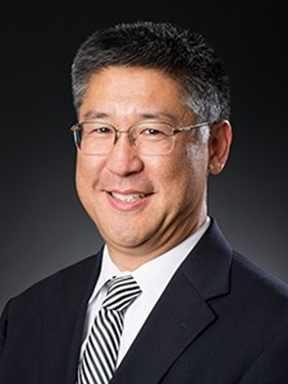 Raymond L. Yuan became the Mission Area Executive for Cyber Operations of the Johns Hopkins University Applied Physics Laboratory on September 10, 2015. In this capacity he oversees cyber security technology development within the Asymmetric Operations Sector for the Department of Defense and the Intelligence Community. As the nation’s largest University Affiliated Research Center, APL performs research and development on behalf of the Department of Defense, the Intelligence Community, the National Aeronautics and Space Administration, and other federal agencies. The Laboratory has more than 7,500 staff members who are making critical contributions to a wide variety of nationally and globally significant
Raymond L. Yuan became the Mission Area Executive for Cyber Operations of the Johns Hopkins University Applied Physics Laboratory on September 10, 2015. In this capacity he oversees cyber security technology development within the Asymmetric Operations Sector for the Department of Defense and the Intelligence Community. As the nation’s largest University Affiliated Research Center, APL performs research and development on behalf of the Department of Defense, the Intelligence Community, the National Aeronautics and Space Administration, and other federal agencies. The Laboratory has more than 7,500 staff members who are making critical contributions to a wide variety of nationally and globally significant
technical and scientific challenges.
Prior to assuming his current responsibilities, Mr. Yuan was the Deputy Mission Area Executive. From 2002 to 2013, he served as the National Systems Program Area Manager, responsible for programs with the Intelligence Community and US Cyber Command as well as cyber-related tasks with the Department of Homeland Security. He developed business strategies and established program goals, conducted integrated investment and resource planning, and executed programs across a range of research and development efforts that included deployment of new technical capabilities for the Intelligence Community and the DoD. Other responsibilities included fostering a key APL role as the Trusted Agent for Enterprise Systems Engineering at NSA and leading department-level strategic planning to focus on critical sponsor intelligence needs.
Prior to becoming the National Systems Program Area Manager, Mr. Yuan served in numerous program and technical leadership roles. These included managing aviation and surface vehicle programs with the Department of Transportation, leading systems engineering analysis, vulnerability assessment, and test and evaluation programs with the Navy and conducting internal research in novel network and satellite communication capabilities. He joined APL in 1985, initially working in the communication systems engineering area.
Mr. Yuan earned both his Bachelor of Science and Master of Science in Electrical Engineering degrees from the University of Michigan.
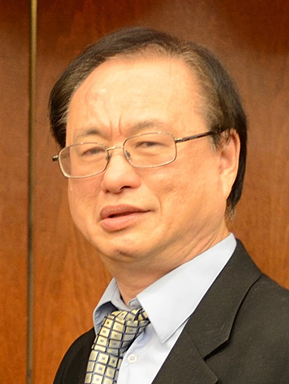 Dr. Steven Yuen is a Senior Emerging Technology Engineer at the First Responder Network Authority (FirstNet). He is responsible for the long-term technology planning of the Nationwide Public Safety Broadband Network (NPSBN), focusing on 5G and beyond technologies related to the cellular network and cybersecurity. Prior to FirstNet, Steven was a Principal Member of Technical Staff at AT&T, designing and deploying the 4G LTE core network and roaming services. Prior to AT&T, Steven was the Distinguish Member of Technical Staff at General Dynamics, developing the ground network of a next generation satellite communication system using the 3G UMTS technology. Steven had also held technical leading positions at Motorola, Bellcore (a spin-off from Bell Laboratories), and Texas A&M University. He has over thirty years of experience in the telecommunications industry.
Dr. Steven Yuen is a Senior Emerging Technology Engineer at the First Responder Network Authority (FirstNet). He is responsible for the long-term technology planning of the Nationwide Public Safety Broadband Network (NPSBN), focusing on 5G and beyond technologies related to the cellular network and cybersecurity. Prior to FirstNet, Steven was a Principal Member of Technical Staff at AT&T, designing and deploying the 4G LTE core network and roaming services. Prior to AT&T, Steven was the Distinguish Member of Technical Staff at General Dynamics, developing the ground network of a next generation satellite communication system using the 3G UMTS technology. Steven had also held technical leading positions at Motorola, Bellcore (a spin-off from Bell Laboratories), and Texas A&M University. He has over thirty years of experience in the telecommunications industry.
Dr. Yuen received his Ph.D. degree from The University of Washington in Seattle, WA. He is an IEEE Senior Member and CISSP certified. He was the General Chair of the Midwest Solution Conference, an IEEE technical conference held in Cedar Rapids, IA in 2004.
Steven’s areas of expertise include mobile communications, cellular network, and Information Security. He has published more than 40 papers in professional journals and conference proceedings.
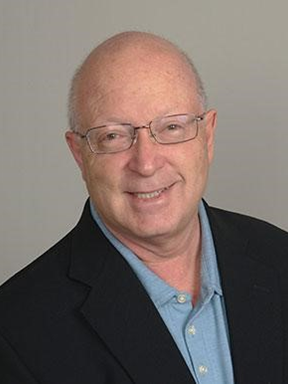 Dr. Douglas N. Zuckerman received his B.S., M.S. and Eng.Sc.D degrees from Columbia University and is an IEEE Life Fellow. His professional experience, mainly at Bell Labs and Telcordia Technologies, spans the operations, management and engineering of emerging communications technologies, networks, and applications. His work heavily influenced early standards for telecommunications network management. After retiring from Telcordia, as a consulting employee he contributed to optical networking standards through the Optical Internetworking Forum (OIF). Doug is a past IEEE Board member, former IEEE Communications Society President, and has held leadership positions in conferences, publications, and membership development. Currently, he is on the IEEE Future Directions and Industry Engagement Committees, as well as co-chair of the IEEE Public Safety Technologies Task Force.
Dr. Douglas N. Zuckerman received his B.S., M.S. and Eng.Sc.D degrees from Columbia University and is an IEEE Life Fellow. His professional experience, mainly at Bell Labs and Telcordia Technologies, spans the operations, management and engineering of emerging communications technologies, networks, and applications. His work heavily influenced early standards for telecommunications network management. After retiring from Telcordia, as a consulting employee he contributed to optical networking standards through the Optical Internetworking Forum (OIF). Doug is a past IEEE Board member, former IEEE Communications Society President, and has held leadership positions in conferences, publications, and membership development. Currently, he is on the IEEE Future Directions and Industry Engagement Committees, as well as co-chair of the IEEE Public Safety Technologies Task Force.


